






































Start looking forward to the next chapter in your life by joining the waiting list at Friends Homes.
Signing up for our waiting list gives you priority access to available apartments, townhomes and cottages. Plus, you’ll get invited to special events, lunches and activities on campus. It’s the best way to explore the recent upgrades, expanded amenities and reimagined dining options that make our community such a refreshingly joyful, remarkably friendly place to live and grow.






Learn more today! Scan the code, call or visit us online.


51

58
62
68
77
Eight
People

























 TOP 5% OF SALES ASSOCIATES NATIONALLY
GOLD TOP 2% OF SALES ASSOCIATES NATIONALLY
PLATINUM TOP 1% OF SALES ASSOCIATES NATIONALLY
ASHLEY MEREDITH HOMES TEAM
MELISSA GREER
DIAMOND TOP 1/2 OF 1% OF SALES ASSOCIATES NATIONALLY
THE FOY GROUP
THE HIVE
THE JAREE TODD TEAM
CHESNUTT & TISDALE
THE DOWELL GROUP JEREMIAH & MAGGIE HAWES
WALES HECHT & ASSOCIATES
DEAN LITTLE
WABAN CARTER
WILLOW LANE REALTY GROUP
BRANNAN/RABE TEAM
THE GIAIMO GROUP MARK YOST
WAYNETTE HOOVER ARAJ
KHADRA BANKS
WINOKA MORGAN
NYASHA ANDERSON
SUE CATHERINE
BRITTANY CECIL REAL ESTATE
KIM WILSON HOMES
MICHELLE PORTER
JAKE LETTERMAN
TOM PICKARD & ASSOCIATES
TOP 5% OF SALES ASSOCIATES NATIONALLY
GOLD TOP 2% OF SALES ASSOCIATES NATIONALLY
PLATINUM TOP 1% OF SALES ASSOCIATES NATIONALLY
ASHLEY MEREDITH HOMES TEAM
MELISSA GREER
DIAMOND TOP 1/2 OF 1% OF SALES ASSOCIATES NATIONALLY
THE FOY GROUP
THE HIVE
THE JAREE TODD TEAM
CHESNUTT & TISDALE
THE DOWELL GROUP JEREMIAH & MAGGIE HAWES
WALES HECHT & ASSOCIATES
DEAN LITTLE
WABAN CARTER
WILLOW LANE REALTY GROUP
BRANNAN/RABE TEAM
THE GIAIMO GROUP MARK YOST
WAYNETTE HOOVER ARAJ
KHADRA BANKS
WINOKA MORGAN
NYASHA ANDERSON
SUE CATHERINE
BRITTANY CECIL REAL ESTATE
KIM WILSON HOMES
MICHELLE PORTER
JAKE LETTERMAN
TOM PICKARD & ASSOCIATES
TOP 9% OF SALES ASSOCIATES NATIONALLY





TOP 14% OF SALES ASSOCIATES NATIONALLY





















MAGAZINE
volume 14, no. 3
“I have a fancy that every city has a voice.”
336.617.0090
111 Bain Street, Suite 324, Greensboro, NC 27406 www.ohenrymag.com
PUBLISHER
David Woronoff david@thepilot.com
Andie Rose, Creative Director andiesouthernpines@gmail.com
Cassie Bustamante, Editor cassie@ohenrymag.com
Jim Dodson, Editor at Large jwdauthor@gmail.com
Miranda Glyder, Graphic Designer
CONTRIBUTING EDITORS
Cynthia Adams, David Claude Bailey, Maria Johnson
CONTRIBUTING PHOTOGRAPHERS
Mallory Cash, Lynn Donovan, Amy Freeman, Bert VanderVeen, Mark Wagoner
CONTRIBUTORS
Harry Blair, Anne Blythe, Susan Campbell, Wiley Cash, Jasmine Comer, Ross Howell Jr., Billy Ingram, Gerry O’Neill, Liza Roberts, Stephen E. Smith, Zora Stellanova, Tim Swink, Ashley Walshe, Amberly Glitz Weber
ADVERTISING SALES
Lisa Allen
336.210.6921 • lisa@ohenrymag.com
Amy Grove
336.456.0827 • amy@ohenrymag.com
Brad Beard, Graphic Designer
Jennifer Bunting, Advertising Coordinator ohenrymag@ohenrymag.com
Henry Hogan, Finance Director 910.693.2497
Darlene Stark, Subscriptions &
Jack


“We begin with a call to understand their needs and priorities, ensuring our first visit is immediately productive. Personalization is what really drives the process.”
— Lindsay Sartorio, Senior Design Consultant
Spring is a time for new beginnings, and when you’re expertly organized, that’s what every morning feels like. All readers can receive $500 off a minimum purchase of $2,500 at California Closets.
Take spring cleaning to the next level — book a FREE design consultation with one of our designers today.*
336.763.4874
CaliforniaClosets.com
Charlotte’s annual celebration of the Queen City’s culinary artistry returns in March 2024. Join restaurants and tastemakers across the city for two weeks of exclusive menus, special limited-time offers and hands-on food and drink experiences.

Explore the full list of participants and make your reservation at: savorcharlotte.com





















 by Cassie bustamante
by Cassie bustamante
“What do you mean you’re going to work at Abercrombie & Fitch? You need to go to grad school,” my college advisor, Dr. Meg Zulick, says to me when I tell her my plans for after graduation. “You’ll be wasting your talents there.”
I’d been working part-time at the mall-based retailer and saw what seemed like an easy upward path. After four years of college, the last thing I wanted was more college. Admittedly, my boyfriend at the time (and future husband), Chris, who knew how to rock that A&F visor, just so happened to work there as a manager. It was a job and I needed one. I more than liked my boss and it paid decent wages. To be fair, it’s a career path that worked out well for Chris. Twenty-four years later, he’s gone from store manager to district management and is now a senior area leader for the restaurant chain Cava, a role in people development that he finds challenging and rewarding.
But me? No, I’d completely lost my footing and was unsure of who I was or who I could be in this world. But Dr. Zulick knew better. She’d been my advisor since I declared my double major in English and communications at Wake Forest University. And she was not having it.
Since she’d been assigned as my advisor, I’d opted to take her class, American Rhetoric, followed by American Rhetoric II. In both, we studied speeches and songs that influenced historic
movements. As a fan of strong female artists — the Indigo Girls, Patti Griffin and Tori Amos ranked in my top five — I thought I knew a thing or two about music that mattered. But before stepping foot into Dr. Zulick’s classroom in Carswell Hall, the brick building that was home to the communications department, I’d never once listened to gospel music.
In her classroom, my eyes — and ears — were opened. Here, the powerful voice of Mahalia Jackson, whose music was central to the Civil Rights Movement, echoed throughout. “This Land is Your Land,” a beloved Woody Guthrie song, took on new meaning once I learned more about the man behind the lyrics. Later, his son, Arlo, penned the song “Alice’s Restaurant Massacre,” a tune my family listened to every Thanksgiving on our drive to our gathering, just outside Worcester, Massachusetts. Growing up, I’d had no idea that the seemingly silly diner ditty I loved to sing along to was a protest anthem.
During many of Dr. Zulick’s sessions, a TV set would be wheeled in and we’d watch black-and-white footage of Dr. Martin Luther King’s speeches, such as “I’ve Been to the Mountaintop.” For speeches that preceded the age of radio and television, we read manuscripts, including the words of famed abolitionist, civil rights and women’s rights activist Sojourner Truth.
I consumed and dissected every piece of rhetoric she fed us — and I loved it. There’s nothing I like more than discovering meaning behind lyrics and writings. During classroom discussions, my hand flew up. I poured myself into the papers I turned in to Dr. Zulick. I trusted her implicitly with my thoughts,


through which she came to understand what lit me up. And, folks, I would discover fairly quickly that it wasn’t retail.
So, it’s no surprise that I find myself sitting across from her, red-faced and exasperated, as she says, “You’re making a mistake.”
And yet, I walked away — leaving college and Dr. Zulick behind me. I didn’t ask for a letter of recommendation so I could go on to grad school. Instead, I took the quick and easy route, thinking retail management might be just right for me. I married Chris and had a few kids. But — through a series of steps and missteps that led me along a path of finding out not only who I was, but what I could be — I found my way to O.Henry, where my love for rhetoric has found a home.
A year ago, I reached out to Dr. Zulick, still a Wake Forest professor. She agreed to meet me for lunch and suggested her favorite dive, Winston-Salem’s West End Café, a restaurant I remembered well from my undergrad years.
Across from Dr. Zulick — who insisted I call her Meg — in a booth, I replayed the last conversation we’d had. “I know I didn’t listen to you, but I wanted the opportunity to say to you in person how much impact you had on me. Your classes opened my eyes, but do you want to know what really stuck with me?” I asked her.
She shook her head.
“You believed in me. And your faith in me has stayed with me for more than 20 years.”
Over sandwiches, we talked about the past — her Pennsylvania-Dutch upbringing and her small local Quaker community — and the future, her retirement creeping around the corner. We chatted about my plans for O.Henry and she offered up some story ideas.
“Well,” I said, “maybe you could write them for us?”
“You know,” she said, “I just might take you up on that.” OH

Over the course of her 40+ year career, Marisa Faircloth, PA-C has developed a reputation as the best in the region. Let Marisa and her team of Physician Assistants, Nurse Practitioners and Medical Aestheticians restore the youthful appearance to your face, neck, jawline, or body without major surgery. Her team will know exactly what to do to bring out your inner glow and to restore your youthful appearance. Call today for your complimentary consultation.


 by Jim dodson
by Jim dodson
Every day
between 3:30 and 4 a.m., I take a cup of coffee outside to an old wooden chair beneath the sky where I sit, look, listen, think and pray.

If you’ll pardon the expression, it’s something I’ve done religiously for at least two decades, regardless of season and weather, bitter cold or bright summer night. Fog, rain, snow or sleet — almost nothing keeps me from my early morning rendezvous with the universe.
I call it coffee with God.
Between you and me, it’s probably the only time in my day when I can be assured, with the faith of a mustard seed, that I and the world around me are reasonably OK.
Between God and me, you see, it’s something very personal.
After sipping coffee and eyeballing the night sky for a bit (I’ve seen several shooting stars over the years, probably a few UFOs, too), I listen to an app on my smart phone called “Pray As You Go,” a daily scriptural meditation produced by the Jesuits in Britain.
That puts me in the mood to chat with God about whatever is on my heart or mind.
Sometimes it’s worries about the state of the world, which always seems to be coming apart at the seams and can clearly use as many healing prayers as it can get. The news out of Israel this year has been like watching the Old Testament come to life. It’s eye for an eye and tooth for a tooth until everyone is blind and toothless, as Mahatma Gandhi supposedly said. Dear God, I ask, will we ever learn to give peace a chance?
Sometimes it’s thoughts and worries about our far-flung children that occupy my coffee time with God. One of them is always up to something that tends to keep the old man up at night. The good news is, they’re all smart kids with very good hearts. I have
faith they’ll figure it out in time. They may even learn that praying is good for the soul and usually works wonders. Some atheists even pray — just in case.
Most of my morning prayers, however, are focused on simple gratitude. I give thanks for my amazing wife, our good-hearted kids and the possibly undeserved good fortune I’ve enjoyed in this life. I often give thanks for other things great and small, including, but not limited to, unexpected blessings, birds at the feeder, good Samaritans, golf buddies, wise book editors, phone calls from old friends, rain for my garden, our crazy young dogs, our cranky old cat, afternoon naps and people who say thank you.
Meister Eckhart, the 13th century German mystic and priest, said that if your only prayer is “thank you,” that will be enough.
I rarely ask God for stuff, except maybe a little help finishing a book or finding patience with idiots who run red lights or drive too fast through the neighborhood. The world is moving much too fast. The truth is, I probably need to slow down, too.
Critics of faith like to say there’s no such thing as a personal relationship with God.
They argue that we human beings are simply a collection of random molecules floating aimlessly through a cold and empty universe. I’ve lived long enough to know that’s simply not the case. I can’t, frankly, think of anything more personal than a relationship with a divine source whose name is different in every language but the same in loving spirit.
This probably explains why I’ve naturally felt God’s presence since I was a little kid growing up across the rural South. In the absence of playmates, I spent most of my time alone outside immersed in nature, looking at birds and bugs, taking hikes through the woods, building forts, watching clouds pass overhead, listening to the love songs of the bullfrogs and the crickets, reading adventure stories on hot summer days beneath shady trees. I never felt alone for an instant. In fact, I felt accompanied
by a large and loving presence that clearly cared for me and probably kept a sharp eye on whatever funny business I was up to.
Maybe this is why Jesus was so keen to have little children come near him. As we age, we lose that sense of natural wonder.
It also may explain why, as an adult, I’ve never been terribly keen on public praying, even the lovely prayers and familiar creeds we recite at church every week. They’re written by other well-meaning people and meant, I suppose, to help us catch God’s ear.
Between us, I don’t think God has a hearing problem.
Besides, as Jesus advises in Matthew 6, when you pray, go into a dark closet, shut the door and pray in secret, for God sees you and knows your heart and will openly reward you.
With coffee in hand, I like to think of my early mornings outside beneath the stars — which are always there, even if you can’t see them (kind of like God) — as my own great, big private prayer closet. No need to even shut the door. The world at that hour is normally so dark and quiet that I can whisper to God about anything on my mind. And the strangely wonderful thing is, God whispers back.
One of the worst things that’s happened to faith and prayer across the ages is the unholy marriage of religion and politics. Both are manmade institutions that thrive on telling people what is the correct thing to believe, and what isn’t. Often, when the two get together, all hell can break loose for anyone who dares to believe differently. Near as I can tell from many years of whispering to and

being whispered to by some large and loving divine source, God is probably not a member of any particular denomination, sect, tribe, religion, political party or NFL booster club.
I happen to be a follower of Jesus, but find deep inspiration and comfort from the prayers of every faith tradition, a reminder that we’re all just ordinary folks down here on an ailing planet trying to help each other find the way home.
One of my favorite books is called Heaven on Earth: Timeless Prayers of Wisdom and Love by Stephanie Dowrick. I found it a decade ago in a London bookshop and have probably purchased half a dozen copies since to give friends who regularly pray — or ought to.
It’s a marvelous collection of prayers from every spiritual tradition.
One of my favorite prayers comes from the ancient Bhagavad Gita: “Whichever God you worship, I will answer your prayer. Whatever path you take, I will welcome you.”
Funny how similar that sounds to Isaiah 41: “Do not be afraid, for I am with you. From wherever you come, I will lead you home.”
Easter arrives on the last day of March this year, a month named by the Romans for the God of War. Easter’s message is one of rebirth and forgiveness.
I pray it’s time we forget war and find peace at last. OH
Jim Dodson is the founding editor of O.Henry

















"A spirited forum of Gate City food, drink, history, art, events, rumors and eccentrics worthy of our famous namesake"
Plant some beets. Now. If you don’t have a vegetable garden, put them in your flower bed or in a planter. They’re easy to grow, thrive in cold weather and add a splash of color to your winter palate of pale, mushy turnips, rutabagas and potatoes.
Beets in all forms are descended from a maritime plant that grows wild along the Mediterranean and Atlantic coasts of Europe. Prized by the Greeks and Romans for their green tops (Swiss chard is a first cousin to beets), the multicolored roots were largely ignored except for animal fodder through the 17th century. Beetroots, as the Brits call them, really didn’t catch on until the 19th century when the French began pairing them with rich béchamel sauce, stewing them in butter and drowning them in cream. Then again, what doesn’t taste good after swimming in a rich roux? Meanwhile, on the other side of the Atlantic, “throughout the Colonial era, Americans relied heavily on the garden beet for survival during the winter months. The vegetable was considered an essential winter food — especially during the Six Weeks of Want, a period of produce scarcity that extended from the end of January through mid-March.” That, according to the Smithsonian’s online article “Beauty and the Beets.” (There’s also a www.justbeetit.com website and an online recipe for Paula Deen’s Red Velvet Beets.) On the other side of the planet in Belarus, Poland and Russia, borsch was emerging as a nourishing beet-intensive stew, packed with other various cold-climate vegetables and amped up with almost anything on two or four legs. Ukraine claims borsch as its national dish. An X-(or Twitter-) sphere battle is ongoing between Russia and Ukraine over the birth of borsch. The comments section is ripe with fighting words: “As if stealing Crimea weren’t enough, you had to go and steal borsch from Ukraine as well.”

that aren’t ruined by canning. Harvard beets (beets, sugar, water and cornstarch) are one of my favorite winter dishes. (The name is derived from the deep red of Harvard’s football jersey — or perhaps a tavern in England named “Harwood” that was corrupted in American English into “Harvard.”)
I’m not sure my mom (or most other Southern cooks of her era) ever cooked beets that weren’t canned — and then pickled. If there’s a traditional Southern recipe for beets that are anything but pickled, I’d be tickled to know. I couldn’t find one in any of my slew of Southern cookbooks, including the one from Crook’s Corner, though I know they once served warm-goat-cheese salad with roasted beets and pumpkin seeds. A shame, because they’re so good roasted or in borsch or even raw in salads.
But back to beets. Fresh is best and farmers markets will be peddling them soon — red, yellow, orange and candy-striped. Don’t have the space to grow your own or the time to make it to the markets? Beets are one of the few vegetables, in my opinion,
I must admit that most of the beets we grow rarely get much larger than shooter marbles. No sweat. We split them in half, cut up the greens and throw them in a frying pan with way too much butter. Butter, beets, ba-da-boom. Ba-da-yum. Don’t beat me up. Remember I don’t claim to be an expert gardener, just a sage one who never skips a beet.
— David Claude Bailey
There’s a reason the March Hare in Lewis Carroll’s epic tale, Alice’s Adventures in Wonderland, appears nerve-wracked and, well, harried: We’re betting it’s because he’s just returned from a family vacation with his many offspring. Since his month is upon us — and so is spring break — we thought we’d offer up a helpful packing list for Mama or Papa Rabbit. Hop to it!
Snacks: We know you’re on break, but here’s a little math equation for you. Take the number of snacks you think you need and multiply that by at least five. It likely still won’t be enough, but you’ll get closer.
A book: You’re a sippy-cup half-full kind of thinker, aren’t you? We like how hopeful you are that you’ll have time to relax. So, go ahead, bring the book. They make great coasters.
An outfit per day: Load up that suitcase with fashions for the person you hope you’ll be on vacay as opposed to who you know you’re gonna be. Just make sure you also pack your fav sweats. You know, the ones with the holes.
Devices with screens: Let’s just be honest here. Opening aforementioned book? A device in the hands of your kiddo might be your only chance.
Ear plugs: We’re sorry, what?
To Cassie Bustemante in response to her December 2023 “Chaos Theory.”
Laid up by my third round of COVID (my chemocompromised immune system likes to alternate that with pneumonia every few months), I finally found time to read December’s O.Henry and laughed out loud over your story of blow molds, which I did not know were called that until today. My three offspring and their two cousins loved nothing more than seeing their paternal grandmother’s “tacky Santa,” old and faded then, lighting up her carport in the ’70s. He was so beloved that when Nanny’s “treasures” (of which there were three stories and an outbuilding full) were offered upon her entering a nursing home, the only item asked
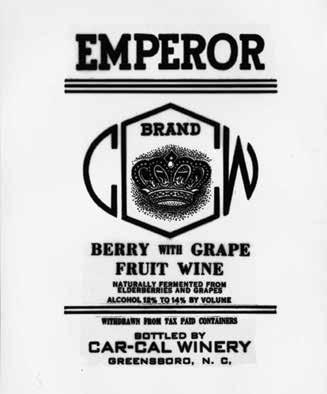
Did you know that New York-based Constellation Brands has its humble roots in the Gate City? Beginning life as Car-Cal Winery, the company imported from California and bottled here before relocating to the Empire State. You could say it was a Car-Cal-culated move as it's now one of the world's top wine producers.
for by name by all five grands was Tacky Santa. It took some costly negotiation, but my middle son prevailed and, to this day, it’s the “leg lamp” on the front porch of his multimillion-dollar Texas home, even after the HOA’s silly comments about “not meeting neighborhood standards of taste.” Thanks for the memories!
— Nelda Howell LockamyThank you to all who entered our 2023 O.Henry Essay Contest, with the theme, “The Kindness of Strangers.” Your stories brought tears to our eyes and laughs to our lips while cementing our faith in humanity. With so many delightful entries, our task was daunting, but we’re pleased to have chosen three beautiful essays that will appear in our pages throughout this year. Without further ado, your 2023 winners:
First Place: Ronald Winter, “The Kindness of Strangers, In Unlikely Places”
Second Place: Harry Roach, “The Gift of the Fan Belt”
Third Place: Kay Cheshire, “The Checkout Counter”
We’re mixing things up for the 2024 contest and will accept entries May 1 through September. 30. Look for an announcement and details about our theme in our forthcoming May issue.


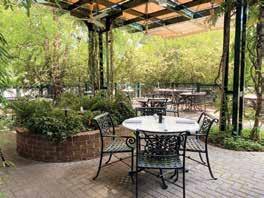

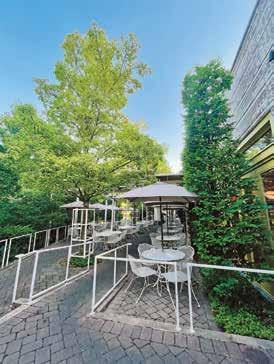
Nobody knew what to expect in 2018 when a group of readers, writers, students, academics, authors and volunteers organized the inaugural Greensboro Bound Literary Festival. Founded by book lover Steve Colyer and Scuppernong Books owners Brian Lampkin, Steve Mitchell, and Deb and Dave White, it closed with a sold-out event featuring celebrated poet Nikki Giovanni.
Now Greensboro Bound has named its first-ever executive director. What prompted the move?
“Exhaustion,” says Lampkin. “Most nonprofits get to that point,” he chuckles. “You have all this volunteer enthusiasm and you realize you need somebody to tie everything together.”

After a thorough search, Greensboro Bound decided on Lex Orgera.
“Lex is an exceptional writer and publisher,” Lampkin says.
A poet, writer, editor and herbalist, Orgera holds an M.F.A. from Emerson College. She is the cofounder of Penny Candy Books for young readers and the author of two collections of poems, along with a memoir, Head Case, about
losing her father to Alzheimer’s disease.
“I’m really thrilled to be stepping into the role of executive director in an organization I believe in,” Orgera says. “The festival is an amazing weekend of conversations, ideas and workshops, but we also partner with Guilford County Schools to get books and authors in front of students,” Orgera adds. “We stay busy!”
And the upcoming festival in May?
“We have a little something for everyone — best-selling novelists, awardwinning poets, music writers, culture critics, chefs, memoirists and more.”
With Orgera on board, the 2024 edition of Greensboro Bound should be quite a read. — Ross Howell Jr.











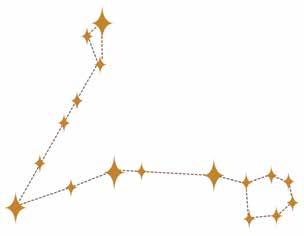
(February 19 – March 20)
They say the average person has three to five dreams per night.
The average Pisces, on the other hand, exists in a perpetual dream state, operating from a realm of consciousness akin to a bowl of kelp-laden miso soup. Be gentle with yourself this month, especially when a high-pressure deadline threatens to derail you.
Should you find yourself floating on a cube of silken tofu, con sider it your life raft from a kind and loving universe.
Aries (March 21 – April 19)
Suffice it to say that the eagle has landed.
Taurus (April 20 – May 20)
Try rearranging the houseplants.
Gemini (May 21 – June 20)
Worrying won’t change the outcome.
Cancer (June 21 – July 22)
Note the spice level warning.
Leo (July 23 – August 22)
Mustard versus vinegar, baby.
Virgo (August 23 – September 22)
A dull knife is most dangerous.
Libra (September 23 – October 22)
Drop the act.
Scorpio (October 23 – November 21)
A splash of lemon goes a long way.
Sagittarius (November 22 – December 21)
They don’t need to understand.
Capricorn (December 22 – January 19)
Invest in a nail brush.
Aquarius (January 20 – February 18)
More tree pose. OH
Zora Stellanova has been divining with tea leaves since Game of Thrones’ Starbucks cup mishap of 2019. While she’s not exactly a medium, she’s far from average. She lives in the N.C. foothills with her Sphynx cat, Lyla.









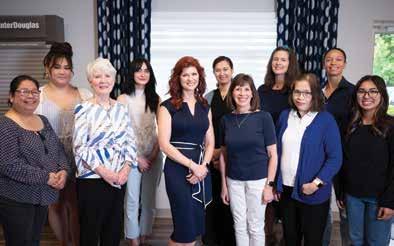


 by m aria Johnson
by m aria Johnson
As a child of the ’60s and ’70s, I was an advertiser’s dream.
Allowed to roam all three TV channels — four if you counted “educational TV,” which I didn’t — I spent many Saturday mornings glued to the cartoon adventures of Bugs Bunny, Road Runner, the Flintstones, Jonny Quest, the Jetsons, Scooby-Doo, Space Ghost and Fat Albert while making room for real humans in the form of The Monkees.
I use the term “real humans” loosely.
Anyway, consuming so much animation gave me a rich audio and visual catalog. I still hear the whistling of falling anvils when something drops, mutter “ruh-rho” when I make a mistake, and feel like I’m turning to a block of ice then cracking into a million pieces and falling into a pile of shards when I step into water that’s colder than expected.
So, you know, yabba-dabba-doo for imagination.
I also ingested a helluva lot of marketing for sugary convenience foods, which translated — as intended — into me begging my parents to buy them, which translated into a nasty Pop-Tarts habit.
Strawberry.
Blueberry.
Brown sugar-cinnamon.
Dutch apple.
Chocolate.
Painted with a hard shellack of frosting.
Or plain.
It hardly mattered.
These highly processed tiles of joy were sold as “toaster pastries,” which was laughable because they were neither real pastries nor toasted. Not much anyway. Not in our house. My brother and I usually snarfed down those perfectly rectangular suckers at room temperature.
They were packaged in twos, suggesting to some people, perhaps, that the contents were meant to be shared. Translated into sibling-speak, however, the meaning was clear: “Two for me. Get
your own.”
We did, and we were wary of pretenders, chiefly Toastettes, which were distinguished by deep hash marks around the edges, and Danish Go-Rounds, which were flat tubes of fruit-filled crust curled into spirals.
Imposters, both.
In due time, of course, I left Pop-Tarts behind, moved onto other unhealthy habits and eventually — as happens to the best of us — became a health-conscious adult.
If I ever bought Pop-Tarts for my own kids, I don’t remember it.
In fact, I tilted the other way, toward whole-grain parenting. Let’s just say there’s a reason my adult sons sometimes tease me with the word “flax,” as in, “Oh, what a shame, Mom. There’s no flax on the menu.”
Or, “What would you call the color of those jeans, Mom? Flax?”
Or, “If only I’d eaten more flax, this wouldn’t be happening.”
To which I can only say, “That’s probably true.”
So, honestly, it was one of the biggest shocks of my life when the boys came home for the holidays recently and we all sat down to watch one of their alma maters, N.C. State, play in a longstanding Florida football contest that was branded, for the first time ever, as the Pop-Tarts Bowl.
Huh?
My interest was piqued.
I hadn’t thought of them — Pop-Tarts, I mean — in so long. And now, here was the logo, plastered all over the field and the screen. Honestly, I didn’t realize Pop-Tarts were still in production.
Then came halftime, and a bellowing announcer directed everyone’s attention to midfield, where a giant toaster was set up. Music blared and the crowd noise swelled as the official Pop-Tarts mascot — frosted, natch, with sprinkles — rose up on a stage inside one of the slots.
Jets of sparks and smoke spewed as the mascot emerged into full view.
Endowed with golden-brown arms and legs, the Pop-Tart strutted, punched the air and whipped up the crowd with his painted-on smile.
It was a rock star’s entrance. Freddie Mercury had nothing on







life's funny
privilege of eating the mascot at the end of the game.
It was blatant cannibalism.
I was all for it.
At the game’s conclusion, as thousands of fans roared their approval, the mascot sacrificed himself to the humongous toaster, descending on his stage to a fate sealed by the heating elements.
A few seconds later, an oversized, frosted tart — sans arms and legs — slid from the bottom of the toaster. The winning team was invited to come over and break off a piece to celebrate.
It was advertising genius.
I fell for it. Again. As it turned out, I had plenty of company.
The kitschy show went viral.
Pop-Tarts’ brand value jumped 25 percent thanks to the media chatter, such as this post on the social platform X:
“I would actually watch the Super Bowl halftime show if it was the Pop-Tart fighting a Toaster Strudel.”
Enchanted fans snapped up novelty T-shirts commemorating the game.
And my newly exposed sons?
The epicure decided he could do without pastries that resembled postcards.
The other, the anti-flaxxer, was open to a Pop-Tart inclusive life.
Secretly, I was happy.
Days later, when we dropped him off at the airport, I noticed he’d left something behind on the car seat: a silver packet of Pop-Tarts.
“Wait here,” I told my husband. I dashed into the airport, sussed out my son in a security line and pardoned my way through the queue.
“You left this in the car,” I said, breathlessly handing him the shiny packet.
He grinned.
I grinned.
Then I turned and zipped away as fast as . . . well, the Road Runner.
Meep-meep. OH
Maria Johnson is a contributing editor of O.Henry magazine. Email her at ohenrymaria@gmail.com.


That noun rarely comes to mind when considering the attributes a writer should possess in abundance. But what a writer does — the act of creating through fiction, poetry, drama, etc. — is something anyone could do who has the heart, the skill and the courage to do it. And courage is what Fred Chappell, North Carolina’s former poet laureate and career-long creative writing teacher, instilled in his students during his 40 years as a professor in the Master of Fine Arts program at UNC Greensboro.
Fred died on Jan. 4 at age 87, and I suspect he would find this highfalutin’ courage stuff a trifle excessive. He would laugh and shrug it off as so much puffery. But in fact, courage was Fred’s greatest gift to his students. They had to demonstrate the fortitude to survive his graduate writing workshops. If you couldn’t take the criticism, you had no business pursuing a writing career. Moreover, you’d be unlikely to take the chances necessary to produce art that’s compelling in its originality.

.
When other poets were playing it safe with carefully controlled collections of verse, Fred suddenly expanded the national poetic palette by employing a startling range of forms. Reviewers labeled Midquest “a verse-novel,” but such descriptions don’t capture the variety of exploration and the sense of adventure evident in each “poem” in the collection.
The arrival of Midquest had an effect on late 20th century audiences similar to that of Leaves of Grass on 19th century readers. Within a familiar format, there’s an explosion of energy and constant exploration, all of it mingled with Fred’s depth of knowledge, range of diction and implacable intellectual curiosity. Fred lays it all on the line and he makes it work. Midquest could only have been written by a poet of extraordinary courage.
Fred taught by example, demonstrating great courage as a writer from his early Southern gothic novels to his last line of poetry, taking his readers into unexpected precincts, exploring new ground within the context of traditional verse and prose, while always challenging and surprising and delighting his readers.
Of the more than 30 books and hundreds of uncollected stories, poems and literary essays that might be reviewed in this space, one book stands out as both traditional, experimental and uniquely ambitious — Midquest: A Poem — for which Fred was awarded the Bollingen Prize.
Originally published as four chapbooks — River, Wind Mountain, Bloodfire and Earthsleep — the poems (each volume is presented as a single poem composed of shorter poems) appeared from 1975 through 1980, when Fred was in his 30s. Constructed around the elements of water, wind, fire and earth, the work that comprised Midquest was a startling achievement following Fred’s first vol-
The poem “Firewood,” which appears in Bloodfire, is nothing less than astonishing. A stream-of-consciousness foray through the mind of a persona who is chopping wood, it’s demanding of readers in its humorous wordplay and levels of philosophic allusions. As the persona hacks away at the heart of oak, he muses in some of the densest language imaginable. Here’s a bit of “Firewood”:
. . . we can even half read the dark that sucks the fire away & swallows, hearth being dug out of earth & overpowering entropy of earth clouds from the beginning the wild root mass of fire, it was sun jammed into dirt that raised the tree, Lucretius’ seed of fire ignis semina is seed semina mortuis (dirt we rose from, dirt we’ll never forget) of death in that same split second, moment split by the man’s hand hard as an iron wedge . . .
And so the poem goes for more than 450 lines that engage, delight, mock, question, enlighten, challenge, amuse and befuddle the determined reader, all of it sustained by an energy that’s part elegiac, folkloric, spiritual and droll. If “Firewood” is
a trifle demanding of the reader, it’s emotionally immersing and immensely satisfying as a work of art.
I was out of the MFA program and publishing books of poetry when I read “Firewood.” The sheer brilliance of the work left me with the knowledge that I’d never achieve such excellence but that I’d be compelled to try, even if it took forever. Fred’s Midquest had relegated me and my fellow poets to the status of neighborhood rhymesters.
If “Firewood” demonstrates a degree of exclusivity, “Cleaning the Well” from River is generous and inclusive — a narrative poem about a boy lowered into a well to clean out years of accumulated detritus:
Two worlds there are. One you think
You know; the Other is the Well
In hard December down I went.
“Now clean it out good.” Lord, I sank
Like an anchor. My grand-dad leant
Above. His face blazed bright as steel . . .
Beginning his descent into the unknown, the persona imagines:
Ribcage of drowned warlock gleaming, Rust-chewed chain mail, or a plangent
Sunken bell tolling to the heart
Of Earth. (They’d surely chosen an art-
less child to sound the soundless dreaming . . .”
What does the poet find? He discovers random objects right out of the possibilities of life:
Twelve plastic pearls, monopoly Money, a greenish rotten cat
Rubber knife, toy gun, Clock guts, wish book, door key, An indescribable female hat.
Hauled back to the surface, the poet muses:
I had not found death good.
“Down there I kept thinking I was dead.”
“Aw, you’re all right,” he said.
Fred followed Midquest with more than 25 books — novels, short story collections and volumes of poetry — material crafted with his unique combinations of precision, intellect, generosity and courage. But Midquest remains a singular masterpiece, a poem every lover of great literature should read and cherish. OH
Stephen E. Smith graduated with an MFA in creative writing from UNC Greensboro in 1971. He was one of Fred Chappell’s students, and a friend. Apprentice House Press will publish Smith’s memoir, The Year We Danced, on May 7.

Years ago, I had a culinary revelation — citrus fruits reign supreme in the depths of winter or when it simply won’t go away in March. How could a season so dark and chilly yield fruits so bright and tangy? How could such vivid sweetness thrive in a season painted in shades of gray? I had always associated lemons with summer and my seasonal childhood fav — ice-filled fresh lemonade. Nature never ceases to amaze me and, while I can’t explain why things are the way they are, I do know that every savory dish needs a dash of acidity. When I was preparing this recipe, I was reminded of a book by Samin Nosrat called Salt Fat Acid Heat. Nosrat believes that if you can master those four elements, you can master the kitchen. The trick? Balance — that delicate dance of flavors and textures. When done right, balance creates unforgettable meals, the kind your senses recall at their very mention. This recipe reminds me of that profound truth.

Salmon, rich in omega-3 fats, salted and seared, then basted in citrus butter, creates a melody of acidity and fat — and, of course, salt and heat — that will delight your tastebuds. Even though this recipe is specifically for salmon, the citrus butter would also add a rich, zesty flavor to any type of vegetable, or even your favorite poultry or fish. Imagine roasted broccoli bathed in melted citrus butter or succulent roasted chicken with a tangy twist. I’m drooling already! Don’t be afraid to add fresh herbs such as earthy rosemary, which would also play nicely with the acidity of the citrus. Experiment — Meyer
lemons would add a sweeter flavor, while grapefruits pair perfectly with rosemary, which happens to be readily available throughout the Southern winter. Rosemary salmon with grapefruit butter? Yes, please. This recipe is an invitation to let your creativity sizzle. You can’t go wrong, no matter how ya slice it.
Ingredients
1/2 tablespoon olive oil
1 pound salmon with skin attached, cut into 4-ounce filets
Salt and pepper to taste
Fresh herbs for serving
Citrus Butter
1 stick salted butter, softened
1 teaspoon lemon zest
1 teaspoon lime zest
1 teaspoon orange zest
2 teaspoons fresh lemon juice
2 teaspoons fresh orange juice
Pinch of cayenne pepper, optional
Directions
1. Heat the olive oil in a large skillet over medium heat. Season the salmon lightly with salt and pepper.
2. Place the salmon skin side up in the skillet and cook for 3-4 minutes. Then flip and cook for 2-4 more minutes depending on the thickness of the salmon.
3. Meanwhile, place all the ingredients for the butter in a small bowl and mix until thoroughly combined.
4. Once the salmon is almost done cooking, reduce the heat to low and add a couple tablespoons of the citrus butter to the skillet, basting the salmon with the butter as it finishes cooking for about 2 more minutes.
5. Top with fresh herbs of your choice (I used cilantro). Serve immediately. OH
Jasmine Comer is the creator of Lively Meals, a food blog where she shares delicious, everyday recipes. You can find her on Instagram @livelymeals.


As highly skilled woodworkers, Carl and Karl love making things—furniture, bowls, jewelry, and more. Now, thanks to their efforts to bring a new fully-equipped and stand-alone woodshop to Arbor Acres, the men have a dedicated place to work and share with other residents. “We have a full collection of high-quality tools,” says Karl. “And safety is a key feature,” Carl adds, referring to detailed training sessions. Arbor Acres is happy to continue fulfilling the visions of our residents, who continue to make this place alive with their creative energy.
 By roSS howell Jr
By roSS howell Jr
The City of Greensboro’s recent policy change discontinuing the curbside pickup of leaves piled or in plastic bags has prompted quite a wide range of responses from homeowners — as new civic policies often do.
In my case, I’m concerned about a potential interruption of my supply chain.
So I did what any Greensboro resident would do. I consulted an economics professor.
My neighbor, Bob Wilson, has taught at Guilford College for decades. His wife, Mary Beth Boone, is a print artist. They’re both avid gardeners. In fact, Bob brought a house gift of blueberries from his garden when my wife, Mary Leigh, and I moved into the neighborhood years ago.
Situated on a corner lot in Fisher Park, Bob and Mary Beth’s house is surrounded by a lovely cottage garden. Filled with perennials, it’s colorful throughout the growing season, from creeping phlox in the early spring to the purple foliage of oakleaf hydrangeas in the fall.
Bob, Mary Beth and I share a little secret.
We pinch leaves from neighbors’ curbsides in the fall.
“Bob likes to call me the bag lady,” Mary Beth laughs. When she sees those clear plastic bags on the curb, stuffed with oh-sotempting leaves, she’ll stop her vehicle on the spot and sling the bags into the trunk.
Mary Beth tells me about a recent encounter. She was stuffing bags into her car when a young woman happened along. She stopped and removed her ear buds.
“Excuse me,” the young woman said. “What are you doing?”
Mary Beth explained that she was loading up leaves to take to her house to spread on her plant beds.
“Oh, like composting,” the young woman said.
“Exactly,” Mary Beth replied.
“Cool,” the young woman said. She replaced her ear buds and nonchalantly went on her way.
Bob, Mary Beth and I share a smile.
I ask Mary Beth about her favorite leaves for mulching. She prefers white oak and maple.
My own preference is the slender, slippery willow oak leaves, though raking them can be like trying to rake water.
I just roll my trashcan down the sidewalk to somebody’s curb and start raking. I’m not as subtle as Mary Beth.
I expect some of my neighbors find this behavior eccentric, but excuse it because I’m a writer, and we’re supposed to be eccentric.
For some of us, leaves are the best type of organic mulch you can find.
“Problem is, most people don’t like the way they look.” says Bob. For homeowners with grass lawns, piled leaves can be unsightly. But I’ve found that if you mow over them weekly during leaf drop, they disappear like magic.
Of course, scattered over perennial beds, the leaves hide quickly on their own.
“Leaves are a great mulch for stopping weeds from coming up,” Bob continues. “And they’re the perfect fertilizer.”
He explains that as trees take nutrients out of the soil to grow, they transfer most of those nutrients into leaf production. When leaves fall, the nutrients are returned to the soil.
“So rather than trying to figure out if I’m buying the right fertilizer,” Bob adds, “I know I’m getting the perfect fertilizer.”
“It’s always made sense to me,” he concludes.
Just as the young woman with the ear buds commented to Mary Beth, it’s like composting.
Bob’s even written a book strongly influenced by his experience with gardening over the years. Developed from a course he taught, Greening the Economy describes essential characteristics of healthy natural ecosystems that can be applied to building and sustaining healthy economic systems worldwide. The text has even been translated into Mandarin.
All well and good, but Bob’s book doesn’t solve our dilemma. The curbside leaves that he, Mary Beth and I have pilfered for years apparently won’t be so conveniently available in the future.
And those clear plastic bags that made it so easy to identify the leaves will be relics of the past. OH
Ross Howell Jr. is a contributor to O.Henry magazine. Not all leaves are suitable for mulch. For helpful tips, visit www.simplegardenlife.com/leaves-to-avoid-composting.










It’s January, and I’m at the bar inside The Crunkleton on Franklin Street in Chapel Hill, where the winner of the 2023 Crook’s Corner Book Prize is about to be announced. Intrigue is high, but not for me. I served as judge for the prize, so I already know how the evening will turn out. I’m just thrilled to be among so many writers and book people for the first time since COVID shut down the public announcement of the prize not long after the 2020 winner was announced.

Elizabeth Spencer and Jill McCorkle. They made me feel like I belonged among them, and they set the tone for how I would treat and support the writers who came after me.
I’m also excited to be hanging out with my friend, Daniel Wallace, who I met exactly 10 years before. How do I know it’s been 10 years? Because this is the 10th year of the Crook’s Corner prize, and I was the inaugural winner, and I met Daniel for the first time at the awards ceremony back in 2013. He’s been one of my favorite writers and people ever since.
In 2013, my wife and I had just moved back to North Carolina after my debut novel was published, and to win what has become an iconic Southern book prize meant the world to me, as did the kindness of the writers I met the night of the award ceremony, including Daniel, Lee Smith, Allan Gurganus,
In the moments before this year’s prize winner is announced — it’s Texas native Bobby Finger for his excellent novel The Old Place — Daniel and I stand around the bar and catch up. I ask him about the upcoming March release of the paperback of his latest book, This Isn’t Going to End Well: The True Story of a Man I Thought I Knew, a nonfiction portrait of his brother-in-law William Nealy, who was well known as an impossibly cool outdoorsman who made a name as a cartoonist who drew paddling guides to countless white water rivers throughout the South. Daniel first met William when he was 12 and William was the cool, mysterious guy dating Daniel’s older sister Holly. To say that Daniel looked up to William is an understatement.


William died in 2001, and after Holly passed 10 years later Daniel discovered William’s journals while cleaning out their house. What he read inside changed his perception of William forever. Daniel’s book is the result of his attempts to make sense of William’s life and the effect it had on so many people, including Daniel.
I ask him what it was like to write a book of nonfiction after forging a career as a novelist. The crowd is growing in the bar, and we are talking over the noise of other conversations.
“I never wanted to do nonfiction,” Daniel says. “The joy for me in writing fiction is putting the characters in motion and seeing what one of them does, and how it affects the rest of the characters in the story. There’s this joy that I get from making discoveries while following my characters.”
“Although I like to think of myself as being real. I don’t know what your impression of me is.”
“In writing about William, were you also discovering something?” I ask. “Was it similar to creating a character and getting to know him as you went along?”
Daniel sips his drink and thinks for a moment. “The process was similar to writing a novel even though I had all this material that was already there that I could just pick up and read. The



character I was writing about — and I have to say that when I talk about William as a character, I’m also talking about a person who was my brother-in-law and someone I grew up with — but when that person is part of your narrative, they do become a character. And even I became a character in this book.” He smiles. “Although I like to think of myself as being real. I don’t know what your impression of me is.”
My impression of Daniel Wallace has always been that he is not only real, but that he is also very kind and funny. Every time he sees my two daughters he has some type of trinket to give each of them, and he’s always gone out of his way to offer opportunities to other writers, including in 2015 when he invited me to serve as the Kenan Visiting Writer at UNC-Chapel Hill. As to his sense of humor, when I asked him for a sample syllabus, he sent me what he referred to as the “required syllabus for all creative writing students.” His novels were the only books on it.
My niece, Laela, who’s a junior at the nearby North Carolina School of Science and Mathematics, is interested in publishing, so I’ve brought her along for the evening. When I introduce



Providing premium and affordable companion care, personal care and skilled nursing throughout the Triad.



Independently owned and operated We’ve earned The Joint Commission Gold Seal of Approval® which validates that we follow the highest standards of safety and care.
love The assistance you need to stay in the place that you ACCEPTING NEW CLIENTS THROUGHOUT THE TRIAD Now Offering In-Home Physical and Occupational Therapy 508-A Prescott St., Greensboro NC 27401 336-265-3500 | www.brightstarcare.com/s-greensboro


All work includes a 2-year guarantee • Wildlife Exclusion Specialists • Licensed Wildlife Control Agents • Fully Insured
creators Book a free assessment now! Our methods are effective without using poisons or traps that kill, maim or harm wildlife. They are also safe for humans and pets! 336-525-5531 | RockyaRaccoon@gmail.com
her to Daniel I tell her that I met him 10 years ago at the first Crook’s prize party and how that evening felt like the beginning of my career.
“It was a special night,” Daniel says wistfully. “Of course Wiley’s novel was the only submission that year, but we were all still really happy for him.”
We all laugh, but the conversation takes a serious turn when we reflect on what seems like the constant changes in Chapel Hill’s cultural landscape. Crook’s Corner is a great example. The restaurant opened just down Franklin Street in Carrboro in 1982 and quickly became a staple of the Southern food movement, garnering praise and culinary awards from publications and juries around the country. But, like many restaurants, Crook’s closed its doors during the pandemic, and for now they’re still closed, although there are rumors that it might reopen sooner rather than later.
Daniel followed William and Holly to Chapel Hill and moved there permanently in the early ’80s around the time Crook’s opened. He’s seen so many changes over the decades in a place that he chose because of its creative vibes and how welcoming it was to writers and artists.
“There was a simplicity to it then,” Daniel says. “Part of it I’m sure has to do with youth, but when you live in a place that doesn’t have a building over one-anda-half stories tall, you feel bigger in that town, and you feel more real in a way that you might not feel now.”
Daniel had begun his undergraduate studies at Emory University, and when he transferred to Chapel Hill to be closer to William and Holly, he found himself in a creative writing class led by Lee Smith.

“It was at 8 o’clock in the morning,” he says, “and of course Lee brought her trademark power, personality and joie de vivre to it, which made writing fun. And she was fun. I loved how she taught. It was an adventure with language and story and character that was very appealing to me.”
two years in the import industry. But he couldn’t shake his desire to write, and he couldn’t forget his love for Chapel Hill.
“I moved back here because of the community,” Daniel says, “and because, of course, Holly and William were here, too. But a major part of that decision was that it’s hard to exaggerate the importance of going to Harris Teeter and seeing Lee Smith shopping. The life of a young writer looking out from this hole that they’re in is made so much brighter when you can see that real people have this real job, just like you want to do. You’re not intimidated as much by the possibility of entering that world when you have these roving mentors, these mentors that you haven’t even necessarily met yet, but you see them walking around. You see Doris Betts on the street corner, waiting for the light to change. It’s human, it makes writing a human act.”
The evening is almost over. The announcement has been made, and winner Bobby Finger has said a few words to the audience, as have I. I speak about the power of recognizing debut writers and how important it is to be a member of a community like the one Crook’s Corner and Chapel Hill’s writers have built over the years.
Daniel is gone by the time I step back into the audience. My niece and I find our coats and walk out onto Franklin Street, the cold winter air hitting our cheeks. I can see wonder in her face as we walk back to the car, something I’ve heard people refer to as the “Chapel Hill Magic,” the same thing Daniel felt in the early ’80s after riding his bike to The Cave to play pool with William.
The buildings are taller now, some of the old places have closed, and some of those old people are gone. But this little town, and people like Daniel Wallace, can still make you feel big. OH
Wiley Cash is the executive director of Literary Arts at the University of North Carolina at Asheville and the founder of This Is Working, an online community for writers.










Watching my father
lead Trigger into the den one sunny morning to watch Captain Kangaroo, he proves a point. The pony is as gentle as my horse-loving Dad claims. And Trigger’s taste in TV is spot-on.
This is a moment of undiluted magic.
Because I am every bit the scaredy cat my sister insisted I was, Trigger terrifies me, though Dad argued he’s a fantastic pony. My puny 5-yearold self is certain that, like other horses in Westerns, he cunningly waits to rear up and buck me off.
Dad, laughs, knowing Trigger isn’t itching to buck me; Trigger simply has an itch.
“He didn’t buck you, Cindy girl,” he insists. “Trigger is just twitching at a fly.”
But I grow ever more anxious about riding.
So one Saturday, inspiration strikes Dad. His right brow rises up, a tell-tale sign when he has such moments, and he heads to the barn. With a few clicks of the tongue and some sugar cubes, he returns, leading the pony through the back door straight into the den where I sit munching Alpha-Bits. He recruits my older sister, Sharon, to keep lookout for Mama.
It is so masterful, Trigger doesn’t even jostle the Progressive Farmer magazines on the coffee table as my father leads him.
Stopping before the boxy RCA television, he commands Trigger to lie down on the braided rug. I giggle excitedly as Trigger obeys.
After a few giddy moments watching the Captain, Grandfather Clock and Mr. Green Jeans with Trigger, my sister hisses a warning. Pulling on my Keds, I hastily follow them outside.
Dad saddles Trigger and hauls me up. Then Trigger flicks at a fly. I fall right off.
I lack something essential in the horsewoman department. Pluck? Certainly. Assurance? That, too. Also, weight and balance.
Dad swears me and my sister to secrecy about the TV session, and Mama is none the wiser.
But the episode has done its work, solidifying my desire to
somehow become a cowgirl like Sharon. I dream of becoming bigger and sturdier. One worthy of such an erudite pony as Trigger, a superior pony who appreciates the Captain like I do. Unlike my sister and dad, I remain wary of life on the range.
Sharon, with her sassy cowgirl outfit, hat, red boots and holster, fears nothing. Maybe she’s not a gun slinger, but she does break her shoulder blade defending me from the neighborhood bully.
So I study cowgirl arts, like fire-making, perfected in my bedroom closet, where I strike match after match. Though I never catch my clothes ablaze I am successful in building a roaring campfire — directly outside our front door.
After serious punishments are meted, I abandon fire making and attempt to make a name for myself as a magician, ordering a magic set from Bazooka bubble gum. I envision entertaining cowgirls and cowboys exhausted from fending off desperados on the range.
The main component in the minuscule magic set — lifeless Mexican jumping beans that looked suspiciously like dried black beans — are a huge disappointment.
Even Trigger looks puzzled by the inert beans.
Ditto for the desiccated sea monkeys I order. Magician David Copperfield reports he was similarly inspired by the Captain, too. But the magic act never materializes. Despite my best efforts, the only thing I am able to vanish is my dream of being a magician.
Trigger proves a fine listener as my ambitions unspool and die. The Captain teaches patience, so feeding my confessor carrots and apples, I cluck my tongue like my dad when visiting him in the pasture and barn. Trigger regards me with softly nonjudgmental eyes.
Still, when he flicks, I bail.
Slowly understanding it is neither his fault nor mine, I scramble up to try again. He becomes a good friend to have, despite all the past and future falls.
So, we brace for them together, Trigger and me, waiting for the day I grow bigger, stronger. Worthy of my own cowgirl suit. OH
Cynthia Adam is a contributing editor to O.Henry magazine.


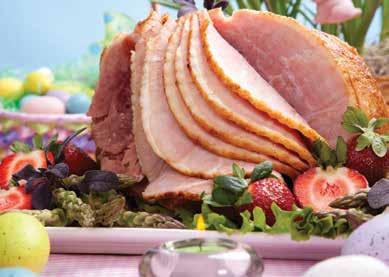



 By SuSan CampBell
By SuSan CampBell
In the Sandhills and beyond, western wanderers can occasionally be found soaring overhead, perched in the treetops or even at a feeder. Birds have wings and so they can (and do) end up anywhere. One of the most exciting parts of watching birds is that you never know who might show up.
Some birds are quite prone to vagrancy. Whether this condition is a result of wandering, getting lost or blown off course, we cannot usually say. Species that are long-distance migrants are, not surprisingly, at risk for mishaps en route. Though studied a great deal, very little about migration is understood. The fact is birds do migrate and most individuals are successful at it, allowing their genes to be passed on to the next generation.
This is not to say that those birds that end up off track are bound to stay lost forever or perish as a result of a wrong turn along the way. In fact, it’s believed that these out-of-place individuals, in some cases, represent the beginning of a range expansion for their species. Records have been kept long enough that we have documented bird populations moving into new areas of the United States.
A species that has been observed in the winter more and more frequently, well outside of its normal range, is the western tanager. This small but colorful songbird is found in the warmer months throughout most of the western U.S. in a variety of wooded habitats. They head for Mexico and Central America come fall. However, in the early ’90s, one showed up at a feeder in Wilmington and stayed — not just one winter but returned
for two more. It fed on suet, shelled seeds and fruit. Since then, more than a dozen other individuals have been documented along the southern coast of North Carolina. What does this mean? It is probably too soon to tell. But bird lovers in our southeastern counties are keeping their eyes out for westerns each year.
It has been more than a decade since the first western tanager appeared in the Sandhills. But this winter, a male western tanager once again turned up in a Pinehurst yard. The hosts, being bird people, realized they had something out of the ordinary at their feeders. It was tricky seeing the necessary field marks on him given his secretive nature. All tanagers molt twice a year and happen to be drab from early fall through early spring, so identification is a bit tricky when these birds do appear in the East. Unlike our more familiar summer and scarlet tanagers, westerns have noticeable barring on their wings and are brighter yellow on their underparts.
Interestingly, there was also a western tanager in Apex (outside Raleigh) this season. It, too, was a male, but he arrived with lots of orange and red on his head and face already — clearly an adult bird. Like the Pinehurst tanager he was rather shy at first, but within a few weeks, settled in and began strutting his stuff several times a day, enjoying mealworms and bits of fruit from the big platform feeder.
Though sightings of western tanagers are rare, it pays to be prepared with binoculars and a good field guide should something “odd” show up. The unusual is always possible, whether you are visiting a large wildlife refuge, local park, a McDonald’s parking lot or even in your own backyard. OH
Susan Campbell would love to hear from you. Feel free to send questions or wildlife observations to susan@ncaves.com.















“Theatre is a series of insurmountable obstacles on the road to imminent disaster.” — Tom Stoppard
I’m not remotely the right person
to pen this. We weren’t close friends. I never met his wife, Lana, and hadn’t seen the guy in 50 years. But when I heard that former Page High School classmate Juan Fernandez (class of ’74, best ever!) passed away, I couldn’t let that tiptoe by unnoticed.
Let’s wayback to the 1972–73 school year, significant in part because the Vietnam War ended, 18-year-olds gained the right to vote, Bob Fosse’s Pippin debuted on Broadway and McDonald’s started serving breakfast (except on Sundays). It was also the year Page High junior Juan Fernandez, whose family moved here from Connecticut just a year earlier, unknowingly, but with an air of inevitability, began his journey as the first Black actor in Greensboro to be consistently cast in leading roles in both amateur and professional productions.
In 1973, Juan and I were both cast in Li’l Abner, a big, splashy musical from Broadway’s Golden Age, featuring one of the funniest scripts (by Norman Panama and Melvin Frank) and wittiest scores (Gene De Paul with lyrics by the immortal Johnny Mercer) the Great White Way ever mounted.
At Page, as directed and choreographed by Louis Hrabovsky and Frank Holder, the show featured a 22-piece orchestra recruit-

ed from the Greensboro Symphony, costumes sewn by UNCG’s theater department, and over 50 student hoofers and belters crowding the stage. This lavish but innocently sexy, fully integrated production of Li’l Abner was an unusual theatrical manifestation for a high school at that time. More importantly, during those weeks and weeks of rehearsals in the role of Marryin’ Sam, Juan Fernandez morphed from gawky teen into a dynamic performer possessing an unmistakeable brilliance comparable to any of the mid-’70s Broadway superstars I sat in awe of. And I saw ’em all, baby. Juan absolutely demolished that Li’l Abner audience on opening night.
And 15-year-old me hated him for it!
Li’l Abner was a genuine hit, largely due to Fernandez’s infectious performance. Standing ovations, sold-out crowds every night and, in the first and only instance I’m aware of, the show was held over for an additional weekend, then booked into War Memorial Auditorium for a short run. After Abner, Fernandez dazzled local theatergoers in musical productions of Showboat, Shenandoah, Godspell and Flower Drum Song, to name but a few. His range was astonishing. Livestock Players Musical Theatre, Greensboro Youtheatre, The Broach, Carolina Theatre, Barn Dinner Theatre . . . there wasn’t a stage Juan Fernandez couldn’t rob of every last laugh or teardrop, often inhabiting


wandering billy
pivotal roles previously portrayed primarily — if not exclusively — by white actors.
“I met Juan when he was 16 and auditioned for Sweet Charity,” says Carole Lindsey-Potter, choreographer and director for Livestock Players during the years Juan Fernandez was active there. “He got the role of Daddy Brubeck, which had the best song in the show, ‘The Rhythm of Life,’ and he brought the house down.” Lindsey-Potter recalls being the first North Carolina theater group to get rights to Pippin, a musical that saw Fernandez cast as Leading Player in the Livestock Players’ 1974 production — “his most memorable performance.” He was what they call a triple-threat performer: “He was a wonderfully talented actor, singer and a natural dancer. Barbara Britton cast Juan as The King in The King and I in 1976. This was long before nontraditional casting here.”


Actor-director and Page alumni Charlie Hensley notes that Fernandez “was a terrific performer and a wonderful man, always at ease on stage.” What he recalls most is Ferndandez’s star turn as Daddy Brubeck in Sweet Charity. “He went on to perform ‘The Rhythm of Life’ hundreds of times after that, all over the world. He was also amazing as the lead in The King and I with Shannon Cochran.”

Obie- and Theatre World Awardwinning star of stage and screen Shannon Cochran (see my April 2023 column) recalls that staging fondly. “When Juan and I did The King and I together, I think he was very conscious of the essential misogyny written into his role and went out of his way to be gallant and attentive to me. I couldn’t move easily in a hoop skirt, but he was always there with a pad or pillow for me to sit on during breaks, always helped me off the floor — our lowly heads weren’t supposed to be higher than his! — and, additionally, he was a divine dance partner! ‘Shall We Dance’ was a dizzying, thrilling ride in his arms. Such a class act with a genuinely strong stage presence.”
Greensboro’s theater scene has spawned a multitude of African-American Broadway stars — Deon’te Goodman (Hamilton),
Avilon Trust Tate (The Wiz (Fences), J. Alphonse Nicholson ( Play) — who surely couldn’t have known that Juan Fernandez was first to break the color barrier onstage locally. Universally loved. Universally respected.
“I worked with him once at The Broach. He was such a nice guy and good actor,” director Michael Lilly says. “I had tried to get in touch with him about a year ago in Wilmington about a project but never got a response. Then someone said he had moved to Costa Rica. I recall hearing he was not well.” Charlie Hensley remarks how, “We usually touched base a couple of times a year, I remember think ing on his birthday recently that he’d been quiet for a while.”
After high school I hadn’t much of an opportunity to interact with Juan Fernandez, having gone away to college, summers spent out of state or touring before relocating to Los Angeles in 1978. Happily, he and I connected on Facebook before his passing last year, allowing me to finally tell him how envious I was of his ability to command the audience in Li’l Abner.
True, Juan Fernandez strut from life’s stage into the wings far too soon, but it’s the actor’s lot to leave the audience wanting more. One wonders if he ever considered or was even aware of his legacy, the trail he blazed. Unlike almost every other artistic pursuit, after the cur tain falls and stage lights go dark, theater leaves behind little more than a rock skipping across the surface of a pond. In the case of Juan Fernandez, the ripples he created will reverberate well into the future, lifting and inspiring not only those he came in contact with, but also performers who, decades later, unwit tingly followed his lead to achieve a level of stardom that generally skirts the first player the spotlight shines upon.



Make no mistake, Billy Ingram was a showstopper as Evil Eye Fleagle in Li’l Abner, but it’s worth noting that Juan Fernandez wasn’t anywhere onstage during those scenes.






In christening gown and bonnet, he is white and stoic as the moon, unflinching as the sun burns through yellow puffs of pine pollen gathered at his crown while I pour onto his forehead from a tiny blue Chinese rice cup holy water blessed by John Paul II himself and say, “I baptize you, Julian Joseph, in the name of the Father, and of the Son, and of the Holy Spirit.” Nor does he stir when the monarchs and swallowtails, in ecclesiastical vestments, lift from the purple brushes of the butterfly bush and light upon him.
— Joseph Bathanti
Joseph Bathanti was the North Carolina poet laureate from 2012-2014. He will be inducted into the North Carolina Literary Hall of Fame in October.
 Jennifer Talton & Julia Luce
Jennifer Talton & Julia Luce
In 1987, the Center for Creative Leadership’s Ann Morrison famously wrote about a confounding and confining glass ceiling: “The glass ceiling is a barrier so subtle that it is transparent; yet so strong that it prevents women from moving up the corporate hierarchy.”
Women working in the business of wine may find its ceiling shatterproof. Historically, the wine industry was and continues to be headlined by male names.
Yet half of female drinkers prefer wine over beer and spirits, and, when it comes to the work place, more choose the wine industry over other alcoholic beverage careers. No less than the venerable Wine Spectator acknowledges the archetypal wine drinker as “dominantly female.”
If that’s the case, why are so few women in the wine industry, either at the helm or involved at a managerial level? Instead of trying to answer that question, perhaps it’s more productive to look at what women are bringing to the wine scene that might otherwise be missing and explore what impact women are having here in the Triad and Greensboro, where certified female sommeliers outnumber males.
“Men have a bigger voice,” says Julia Luce, who operates The

Public House, a High Point business hosting private events and wine dinners. While not a sommelier, she has forged relationships with growers and suppliers. “Women are more polite,” she says. Luce seeks opportunities in nontraditional ways, such as wine classes and pairing events she develops herself. In a word, she says wine is “social.” Rather than cultivars, something she can also talk about endlessly, Luce has focused on cultivating a wine community of her own making.
“Wine is about gathering people together. It is all about your food, your taste, friendships. The conversation. It’s never political or hostile. When you open a bottle of wine, it is over something good. If not celebratory, it’s a discussion. If wine was a person, wine would be a diplomat.”
The Public House grew out of Luce’s previous job.
“In 2012, I worked for a French-Canadian furniture company — they loved wines. They created a commercial kitchen in their showroom and started doing dinners,” she says. “That building is now Earl’s Landing restaurant [in High Point.]”
There, Luce learned to present wines and create wine events. “Now, here I am.”
Stacey Land, vice president at 1618 Concepts, which owns 1618 West Seafood Grill and 1618 Midtown, has had a similarly circuitous route to becoming a female player in the Triad wine scene. Ascending to that role in 2020 from general manager and sommelier at 1618 Midtown, she had spent years working her way through the ranks from washing dishes, eventually becoming Greensboro’s second certified female sommelier via the Master Court of Sommeliers.
Land, who grew up in the food industry, was mentored by the first, Julia
Hunt, an advanced sommelier at American Premium Beverage, formerly at Green Valley Grill, where they met.
(Certification requires candidates demonstrate advanced tasting skills and mastery of theory and service. There are various levels and attainments, one through five, with master sommelier the highest. Depending upon the source — and day — there are an estimated 273 worldwide master sommeliers and 164,000 certified sommeliers in the US. There are only a few accrediting bodies, including the famous Court of Master Sommeliers. Two other bodies, the National Wine School, and Wine & Spirit Education Trust, also certify sommeliers. The majority of working wine professionals industry wide are not actually sommeliers.)

Land joined 1618 in 2010. In 2021, she also earned a third level wine certification via the Wine & Spirit Education Trust.
In the December 2017 issue of Seasons, Ross Howell Jr. wrote “Somm and Substance,” describing how Triad sommeliers, including Land, pursued the grueling path to certification.
As with chefs, Land mentions, women in wine are the exception versus the rule.
Once, Land “had dreams of being a writer and newspaper person.” Graduating from UNCG in 2004 with an English degree, she jokes, “It was like coming into the horse-and-buggy industry the year they invented cars.”
Returning to the restaurant world, Land bought into the former Grappa Grill, which soon closed in 2008.
“I had another crisis of am I in the right business?”
Land flung herself into working full time at 1618 while prepping for — and passing — sommelier exams. “All of my certifications came within the last 12–13 years when working at [1618] West.”
She prepares wine lists
 Evans Mack & Stacey Land
Evans Mack & Stacey Land
and oversees the total guest experience, and fondly mentions 1618’s “Book Club,” their tongue-in-cheek monthly wine club, as a fun way to share wine knowledge. But professionally, she pays her knowledge forward by mentoring female and male colleagues seeking certification, like Hunt once did for her.
1618 colleague Evans Mack also grew up entrenched in the world of food, beverages and service. Now she is the restaurant’s second female sommelier. Land mentions her friend Jake Asaf, owner of Greensboro’s Lewis & Elm restaurant and Rioja! Wine Bar, who qualified as a sommelier at the same time she did.
Meanwhile, Luce has resumed monthly wine dinners halted by COVID. “Ju Ju’s Supper Club” is the latest venture offshoot of her business, partnering with Painted Plate Catering. (They restarted in February.)

Wine dinners create a chain of opportunities for minorities working in the wine industry, Luce says, citing vineyard owners, an organic chef named Jennifer Talton, and a female wine importer. Luce maintains an office in Greensboro’s Fisher Park, decorated with plates signed by vineyard owners
“When you drink wine to enjoy, savor and pair it . . . that, to me, is to live,” says Luce. After all, she adds, “the French are living a long, healthy life because they do it — drink wine — with love and friendship.”
There are a number of other women earning a living in wine service in the Triad. In downtown Winston-Salem, Taylor Beal is one of three sommeliers at Katharine’s Bar & Brasserie, which opened in 2016. “I am the only female.” She earned her level one certification in 2019 through the Master Court, slowed by the pandemic. “I had COVID, which messed up my smell. I’m studying for level three.”
Then there are wine shops and tasting rooms, such as longtime mainstay Zeto wine and specialty shop in downtown Greensboro, owned by Despina Demetriades and Su Peterson.
Founded in 1999, Zeto has carved a niche with grapes that “are grown and produced mostly without chemicals or pesticides,” said Peterson in a televised interview. The shop features a Vinomatic, an automatic wine machine dispensing nearly 30 bottles for sampling, convenient for Zeto’s ongoing wine tastings and classes.
At least two other Greensboro tasting rooms have female owners. Alison Breen of the Tasting Room, and J'mihyia and Paris Whitsett of Marjae's Wine Bar.
Sometimes, key players in the business of wine take lucrative, yet less visible, roles. “A team of women at Johnson Brothers wine distributors has worked together as wine reps since it was bought,” Land says.
Although approximately 200 wineries call North Carolina home, few statistics reveal how many women are at the helm or are involved on a managerial level. One is in the N.C. foothills at Raffaldini Vineyards, where Barbara Raffaldini, splits her life between running Raffaldini and a legal career.
In 2020, sister publication Seasons cover story featured Barbara, who co-owns the winery with Jay, her brother. “Fortune Favors the Bold,” discussed her dual careers as a winery owner and partner for an Illinois law firm.
There remains an elephant in the tasting room. Something Land mentions over a glass of rosé at 1618’s wine bar in Midtown: whether women can hold their own in such a male-centric milieu.
Land worries that women, as an industry minority, struggle with imposter syndrome. She drops her voice. “I’ve been in this business for 20 plus years; if I don’t know how to do this, who does? Have I been faking this? No.”
The comment reflects what author Valerie Young presents in her research. Highly capable and accomplished women, Young writes, may wrestle with that, particularly in maledominated fields.
“You can have all the confidence in the world and still be reluctant to self-promote out of a steadfast belief that a person’s work should speak for itself. It doesn’t.”
To Young’s point, minorities in certain industries may also face unfounded criticism.
Quietly, Land says, “I think it’s in jobs that are male-dominated for so long. Think of women chefs. If you’re a professional woman in an industry that has been male dominated for so long . . . you feel that imposter syndrome.”
Worse, others may ask, “‘How did that woman get to the top of that field?’”
That especially stings. Land’s father, who graduated from Napa’s Culinary Institute of America and remained in the restaurant field until his retirement, begged her not to follow him in the restaurant business. Now, she says proudly, he will call and ask her advice about wines.
Luce agrees that women struggle for a seat at the bar. “We are, industry wide, underrepresented.”
A few years ago, I met Karen McNeil, author of The Wine Bible and a leading light in the wine world. She says, “The road up the mountain is long and sometimes confusing.”
Lesser known are women working in viticulture, the cultivation of grapes. One, Dr. Stephanie Bolton, is leading the way concerning safer and sustainable practices for growers from the rural heart of zinfandel country in Lodi, CA.
A North Carolina native who once studied chemistry as an undergraduate at Wake Forest University, Bolton was recognized last August in Wine Enthusiast magazine’s “Future Forty” for her achievements in viticulture through her research and educational work at the Lodi Winegrape Commission.
Now, her leadership and global initiatives with domestic and international wine growers extends as far as Israel, earning industry distinction.
“I can tell you that in general we are seeing more women get involved on the viticulture side of things, says Bolton. “It’s nice to have both the male and female perspectives in the wine industry positions — we all benefit from that.”
Bolton adds, “I can’t speak for all women, but I prefer wine as a drink of choice over beer and liquor because it transcends me to a time — the vintage — and place — the region it is from — while offering art, romance, history, education and elevating my dinner into a true feast for the senses. Even better when the wine was produced by a friend and I get to feel that special connection, too.”
Connections are key, as Luce suggests. Raise a glass while raising support, too, promoting fellow minorities who are gaining entrée to a once closed industry.
Outliers, perhaps. Regardless, they are chipping away at the glass ceiling, proving it isn’t impervious after all. OH
Two years ago, Fodor’s Travel writer Alex Temblador asked, “Why are there so few women in the spirits, beer and wine business?”
The Distillers Association of North Carolina reports at present approximately 22 of 90 distilleries in our state are “owned, coowned or managed by women.”
Meantime, women are forging inroads into brewery’s upper management. One example is Renee L’Heureux, who leads operations at Red Oak Brewery in Whitsett, N.C., including its Lager Haus and Biergarten.
Here, too, is an interesting acknowledgement of women as consumers of wine. Although the brewery’s German-style beers have a dedicated following, their tasting room also offers a carefully curated wine list. During a week in mid-January, she says, their team spent hours reviewing wine offerings.
Why?
L’Heureux points out, “The industry standard is that 85 percent of wine drinkers at breweries are women.”
Why not offer a decent list, she asks?
Red Oak’s wine list is thoroughly considered, a pragmatic choice, she explains.

In honor of Women’s History Month, we’re paying homage to the fierce females who were pioneers in Greensboro’s arts and culture scene. Some you may know; others you may not.
Beginning in the late 1800s, Scottish immigrant Andrew Carnegie made his fortune in iron, oil and steel, and then invested it in one of the most valuable commodities: public knowledge. At a time when segregation laws were still in place, Carnegie funded 2,500 libraries, including 12 free-to-use libraries, dubbed “Carnegie Negro libraries,” for underserved Blacks. In 1924, Greensboro’s Bennett College became the site of the last one built, and Martha Sebastian, a library science graduate of Simmons College in Boston, became head librarian, a role she maintained until her death in 1948. By 1930, Sebastian had built the largest collection of any public segregated library in the state. Sebastian also amassed an African American literature collection and created a meeting space for Black organizations. Knowledge is power, and, under her leadership, the library empowered those it served. Today the former library houses offices for Bennett College. Nearby, a meeting room at the Vance H. Chavis Branch Library is dedicated to Sebastian.

Hands down, Cone is one of the most recognized surnames in Greensboro history. Brothers Moses and Ceasar established their business, Cone Export and Commission Company, in 1891, which led to a textile empire that culminated in today’s denim innovator, Cone Denim. The name can be seen on schools, street signs and any number of medical facilities throughout the city. But it was the Cone women who would have a profound impact on the city’s art scene. Thanks to the family’s lucrative business, sisters Claribel and Etta were afforded the luxury of global travel and collecting art. In Paris, they rubbed elbows with the likes of Picasso and Matisse, and began collecting Modern art. Their sisterin-law, Laura Weill Cone, married to brother Julius, was a loyal Woman’s College (now UNCG) grad who worried that the school’s Weatherspoon Art Gallery was struggling. She asked Etta to consider a donation. Upon Etta’s death in 1949, a large collection was left to Woman’s College. So next time you admire Picasso’s The Coiffure while perusing the free-admittance gallery, think of Laura and the Cone sisters. Without them, the graceful ink sketch of a Parisian beauty admiring her hairdo in a mirror would doubtless be hanging somewhere other than Greensboro.

Anybody who’s seen an N.C. license plate knows we’re “First in Flight,” but you may not know that the first female in the state to earn both a commercial pilot’s and transport license was Spartan Mary Nicholson. Born in Greensboro in 1905, Nicholson attended North Carolina College for Women (now UNCG) to study music, but, after taking her first flight in 1927, decided the only high notes worth hitting were in the friendly skies. How did she get aloft? Easy. She parachuted out of a plane as an ad for a flying school. In 1929, she became a charter member of The NinetyNines: International Organization of Women Pilots — founded by Amelia Earhart, Fay Gillis Wells and Ila Loetscher, and still around almost 100 years later. She was one of 25 civilian women on the British Air Transport Auxiliary unit during World War II. On May 22, 1943, Nicholson died doing what she loved after her engine froze up, demolishing her propeller mid-flight. Despite her best efforts, she crashed into a stone barn in Worcestershire County, England. Next time you’re preparing for takeoff at PTI and see a female in the cockpit, you can thank Mary Nicholson for paving the runway for others.
On May 22, 1943, Nicholson died doing what she loved.
In 1969, Amelia Leung, a trained nurse who was working at the Lotus restaurant in downtown Greensboro, and her husband Robert, a recent N.C. A&T grad with a degree in electrical engineering, were cruising along Tate Street when they noticed a restaurant, the Apple Cellar, for sale. According to Leung in a November 2016 O.Henry story, the owners weren’t jiving with the rising hippie scene. A couple years later, Hong Kong House opened and dished out more than cuisine; it created its own culture. Amelia blended her Chinese family recipes with customer and staff suggestions, a fusion ahead of its time. But more than the diners, the local musicians were nourished by Amelia and remember her as the “mother of Tate Street.” She offered free meals to starving artists in exchange for playing at her restaurant. Creating a neighborhood atmosphere that welcomed everyone, she helped organize the very first Tate Street Festival in 1973. While the restaurant closed in 1999 and Amelia died in 2021 at the age of 77, the festival returned to Tate Street last fall after a three-year hiatus, once again bringing music, food and people together.

Whether as unofficial “mayor” or "mother" of Tate Street, Amelia Leung fed and nurtured her community.
Sadie Mack, born in South Carolina in 1898, was drawn to the business of beauty from a young age and moved to New York City to pursue her passion. There, she learned cosmetology as well as product manufacturing at Poro Beauty College. Post graduation, she became licensed in the Empire State. But when her brother fell ill, Mack moved to Greensboro to care for him. No powderpuff entrepreneur, she opened her own Gate City beauty shop and married a widowed tailor named Edward D. London. Together they created a joint Black-owned establishment featuring his tailoring and dry-cleaning services, as well as her salon, where she began teaching cosmetology. In 1935, Edward left his tailoring business and the couple opened Maco Beauty College at 505 E. Market St. Quickly outgrowing the space, MBC relocated to a former hotel, which allowed for dormitories as well as other amenities. Sadie died in 1942, but, under Edward’s direction, the school flourished and, during its 34 years in business, trained over 1,000 cosmetologists. Maybe she was born with it, but it certainly didn’t die with her.
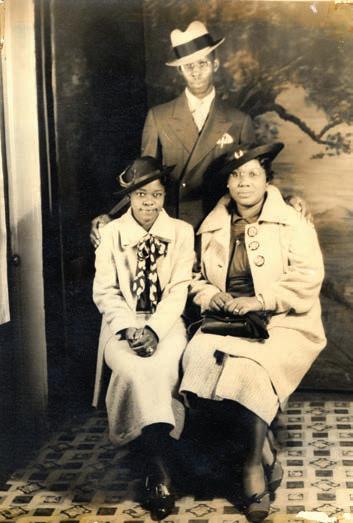
In December 2023, North Carolina A&T State University won ESPN’s inaugural award for HBCU Band of the Year in Division I. Bang the drum for Band Director Kenneth Ruff, but let’s remember Margaret Mitchell Falkener, who founded the music department in 1894. She opened doors for the Blue and Gold Machine to march right through. Born in 1870 in Oberlin, Ohio, Falkener, a talented pianist, came to the Tar Heel State to teach. After settling with her husband in Greensboro, not only did she found the Aggies’ music department, but she also volunteered for more than 800 hours in 1918 alone, providing home service to Black families affected by World War I, and served as the first female supervisor of Guilford County Black schools. Founder of the county’s first Black garden club, an organizing member of Unified Institutional Baptist Church and the mother of five sons, one of whom would become a city councilman, Falkener died in 1938, but her beat goes on.

By the time Elissa Minet Fuchs came to Greensboro in 1976, she’d already had quite an impressive career as a ballerina, radio actress and choreographer. Born in New Orleans, Louisiana, in 1919 to a Jewish American family, Fuchs left at the age of 16 to pursue a professional dance career in Chicago, where she’d heard opportunity awaited. A grand jeté of faith? Perhaps, but from there she pirouetted into professional dancing and teaching for years to come, including work on Broadway, with Ballet Russe, a 12-year stint as a soloist and corps de ballet member at the Metropolitan Opera in New York City, and the founding of the Baton Rouge Ballet Theatre. When her husband, Dr. Peter Paul Fuchs, took on the role of Greensboro Symphony and Opera conductor, Fuchs began serving on the board at the Greensboro Ballet, where she would later choreograph and teach — well into her 90s! In 1981, Fuchs and director Maryhelen Mayfield decided to bring The Nutcracker to the Gate City. It remains a long-standing tradition today. Fuchs died in February 2023 at the age of 103. On her obituary page, one word reappears in the comments left by those who remember her: legend.

If you tuned into WFMY News 2 from 1972–2011, chances are you found the face of Sandra Hughes — a proud Aggie alum-turned-professor — smiling back at you. In 1974, shortly after launching her career in journalism, Hughes became the first Black woman to host her own daily talk show in the Piedmont, Sandra and Friends, which ran for four years. In a 2019 WFMY News story, Hughes recalled receiving bomb threats at the station because of her show, saying “People didn’t think that the time had come for a Black woman to be doing a show by herself on television.” Not only did she prove them wrong, but she became one of the most recognizable names in Triad journalism. As Greensboro History Museum curator of community history Glenn Perkins notes, we can thank her for “opening the door to a generation of journalists.” OH

So why is Dave Baysden smiling?
On the final hole of Rees Jones’ challenging Championship Course at Bryan Park, he’s completed an otherwise sterling round of golf with a bogey on his card.
“Yeah,” he says with a carefree shrug, as he and his playing partners head for a beer in the clubhouse, “that was kind of disappointing, especially after one of my best rounds ever. But how can you not feel happy looking at that?”
He nods toward a fairway tumbling downhill to a slate blue lake glittering in the long light of a golden afternoon, girdled by forests afire with color. “Looks like a painting, doesn’t it,” he muses. “I may have to come back and sketch that.”
Baysden is certainly qualified to do that. A youthful 47, this affable father of two and former engineering artist has taken the golf world at large by storm with soulful paintings of some of the game’s most revered landscapes.
In a fine-art golf world crowded with ultrarealistic renderings of the game’s notable playgrounds, Baysden’s versions of the same tumble with bold movement, swipes of light and color — almost Impressionist in their ability to convey the mood, weather and mythic qualities of his subjects. His work calls to mind the luminous landscapes of 19th-century British Romantic Age painter J.M.W. Turner, works that tug on the emotions as well as the eye.
“I’m not sure I have a particular style,” Baysden allows with characteristic modesty, “because this is all still relatively new to me.
What I simply try to capture is what I see and feel when I look at a golf course and other things in the game. People seem to like them.”
Indeed they do.
His distinctive landscapes, illustrations and sketches have turned up lately on everything from the cover of the 2022 President’s Cup program to commercial golf club headcovers. Underscored by a growing portfolio of major client commissions — including leading private and public entities like Pinehurst, The Dormie Club, Ballyhack, Old Town, Secession and the Country Club of Detroit — his distinctive style is popping up almost anywhere golf is enjoyed.
Not long ago he was invited to support the Arnold Palmer Foundation with paintings and design services for the annual Palmer Cup and the restoration of Palmer’s beloved Latrobe Country Club. A collection of 11 of his paintings also recently found their way to Ric Kayne’s spectacular new Te Arai Golf Course in New Zealand. His sketches for the likes of Bandon Dunes and Sweetens Cove, B. Draddy and MacKenzie Golf Bags, meanwhile, speak eloquently about his visionary art’s broad allure to the small-ball world. Landscapes for Royal County Down, Tara Iti and Kauri Cliffs have also recently graced his studio easel in High Point. Last spring, Baysden was commissioned to do a 4’ X 5’ painting of the Cassique Clubhouse for the USGA’s annual Amateur Four-Ball Championship on Kiawah Island. The list goes on and on.
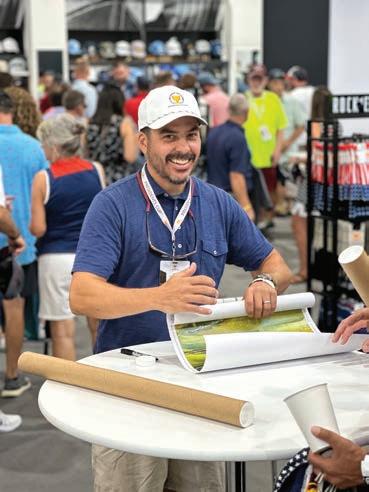
Not bad for a kid nicknamed “Smiley” who grew up in Columbia, South Carolina, doodling in class and church because he believed that helped him concentrate. “I was born a natural doodler,” he says with a laugh. “That really bothered my teachers but, crazy as it sounds, doodling actually helped me pay better attention to what was going on in class. It’s the same now when I’m on a golf course — either doing a live sketch of folks at a tournament or just out on a golf course alone, looking and sketching what I see. My eyes and brain work through my hands. The images come through me to the paper that way. It helps me feel the landscape.”
This somewhat late-in-life gift comes naturally, he explains, from his parents — father, Ron, is a gifted career engineer for AT&T-Bellsouth, and his mom, Carolyn, a lifelong artist. Ditto his sister, Cara, also a visual artist. “Dad is a brilliant engineer, very left brain, analytical and scientific, which was the path I naturally assumed I should follow. But my mother and her father were both landscape painters, so that probably explains why the urge to visually create — to doodle at least — seized my brain early,” he speculates.
After taking a degree in biology at the University of South Carolina, Baysden entered grad school at UNC-Charlotte to earn a master’s degree in geography, which landed him in the planning and development department of a top engineering firm producing detailed maps for major highway projects. “I learned a lot in that

job about how creativity could benefit an engineering environment. I drew landscapes from aerial photography that helped the engineers better envision what they were building. I loved the job. That’s why I stayed in it for 18 years.”
Providentially, however, two factors unexpectedly led him into the world of golf. When his company announced a merger with another firm, he was basically left alone in a 6,000-square-foot space with a decreasing workload. “I knew my job was probably destined to be eliminated, so I set up an easel in an empty office and began to go over there to sketch and paint when things got slow. It felt so good, like something calling me back.” His early works were pastoral scenes of barns, fields and nature. Just for fun, he began putting them on Twitter (now X).
A pivotal moment occurred when, seemingly out of the blue, the pastor of his church in Charlotte invited him to participate in a special project that involved several established artists painting scenes on a wall for the church’s Easter observance.
“These were top artists, mind you, some really talented folks, and I couldn’t believe he would ask me,” Baysden recalls. “I’d never painted anything that large and so public in my life. The fear of failure was pretty real. But terrifying as that was, I realized something had to get out.”
He credits the minister at Forest Hills Church, Steve Whitby, for providing the push he needed. “He told me just not to say no. To be guided by faith. So, I gave it a shot.”
Baysden’s painting of a man struggling to get free of the vines that enwrapped him — simply titled Transgression — struck a powerful chord among those who saw it as a living metaphor for the
human yearning for faith and freedom, a perfect Easter message of rebirth that was happening to the artist himself.
“The response from people — and the other artists — took me by surprise. To tell the truth, I had no idea if it was good or not. But they seemed to really see something in my work. It got me thinking, eager to try more.”
As Baysden likes to say, that’s how art found him again. How golf found his art almost seems divinely orchestrated.
One of those who saw his pastoral sketches online was Graylyn Loomis, one of golf’s leading influencers, an Asheville native who helped take his high school golf team to the state championship in 2010 and spent four years attending the University of St Andrews, clocking more than 180 rounds on the Old Course between classes. Loomis’ passion for links architecture and love of the auld game led him to create a popular golf blog and travel newsletter read by thousands of classic golf nuts.
“I loved what I saw Dave doing online and got in touch because of his spectacular illustration of speckled trout,” Loomis says. “His subjects were almost breathtakingly beautiful. They had such a natural feel, I just had to know who this guy was and where he came from.”
“I remember Loomis asked me — Who are you?” Baysden recalls with a laugh. “We had a great conversation that changed my life.”
Loomis felt Baysden’s luminous art leant itself perfectly to a painting a golf course, and wondered if Baysden would be up for an interview for his blog and consider doing a couple of water-


color paintings of St Andrews and Cypress Point.
“I was floored. I grew up playing golf with my dad and friends but had never painted a golf course before,” says Baysden. “It was kind of scary to think I could possibly paint from photographs. But he also said he saw something unique in my work, so I was willing to try.”
“I simply told Dave that his work was so different a wider audience needed to see it,” Loomis remembers. “I even offered to pay him, but he said he wouldn’t take any money. That’s how humble Dave is. I told him those days would probably be ending soon.”
Today, both paintings hang in Loomis’ home. “His paintings capture the soul of golf. When you look at his work, whatever the subject, you feel like you are really there with him. That sets him apart, in my view.”
Encouraged by the strong response on Loomis’ website, Baysden began posting a daily cartoon of whatever was happening in golf on Twitter, which landed him a gig as roving cartoonist at the PGA Tour Championship.
“It was an amazing experience. They told me to draw whatever caught my attention. I honestly didn’t even know what to
charge them. That’s how inexperienced I was. But it was a blast — the first time I’d ever sketched and walked a golf course at the same time.”
His signed originals of the four “scenes” he produced during the championship’s first two days were presented to the top finishers.
For the PGA Merchandise Show that following winter, Baysden was commissioned to paint a 5’ X 8’ backdrop of the second hole at Old McDonald at Bandon Dunes, which hung in the firm’s booth along with his painted headcovers. “I did the work in our garden shed,” he remembers with a laugh, “because that became my studio at home, where I could disappear and sketch and paint for hours without worrying about the mess.”
That same year, 2018, Tour star Zack Blair invited Baysden to come play and paint at his inaugural two-day event called “The Ringer” at Sweetens Cove. “Dave was really perfect for our event. He did a couple paintings that we auctioned off and everyone loved his work,” explains Blair.
“That’s really where I fell in love with playing the game again,” says Baysden. “I’d never walked a golf course until Sweetens

Cove. I saw the game in a new light, one where friends share their love of the game and true fellowship. It was a true eye-opening experience.”
Not surprisingly, Blair became an enthusiastic friend and patron. “Dave’s art is extraordinary. I have an entire gallery wall of his work at home [in Utah] — not just golf art but also his river scenes, barns and lots of other non-golf subjects. My mother has several of his paintings, too,” says Blair, pointing out that Baysden has been the artist-in-residence at every “Ringer” since the Dormie Club, Streamsong and Sand Valley.
Back home in his studio in High Point — a spare bedroom with north-facing windows, his largest workspace ever — “Smiley the Doodler” finds himself hard at work on a stream of new projects, including work for the approaching 2024 US Open at Pinehurst.
Yet, true to his nature, he takes time to count his blessings.
Maybe most important of all, he explains, as the reach of his
artistic gifts continue to expand across Planet Golf, his friendships through the game have deepened and grown in especially meaningful ways. Perhaps his most notable role has been in the creation of a group of spiritually-minded golfers who started the “Restoration Club,” a faith-based band of brothers who enjoy the fellowship of the game and a community that encourages them to walk with Jesus and be better husbands, brothers, dads and friends.
“I’m still blown away by the generosity of the golf world, so grateful how this all happened,” he muses. “My wife, Mandy, encouraged me at every step of the way and the golf world had been incredible. It’s a long game, as they say, and I’m still learning. But that’s the beauty of golf — and, for that matter, living in this world. There’s always something new that catches my attention. I see it,” he adds, still smiling, “and I want to paint it.” OH


Long before they built their home on a wooded slope that nuzzles up to a small lake in Oak Ridge, Jim and Barbara North got a lot out of their lot.
The Greensboro couple and their children spent many merry hours on the site, visiting friends Bob and Reba Benbow at the Benbows’ rustic getaway home during the 1970s.
“For us, it was a special thing to drive out to Oak Ridge,” says Jim.
The Norths bought two chunks of their friends’ land in
the early ’80s. The Norths’ kids, Scott and Cherie, were in college by that time, but Jim and Barbara still felt a connection to the place, and more importantly, they had a vision for the next stage of their life.
The almost-empty nesters would build a new nest on the incline that was blanketed by hardwoods and pines. Residential development had just started in Oak Ridge, now a popular bedroom community thick with brick manses.
“This was out in the country when we came,” Barbara remembers. “There was nothing out here.”
The couple hired renowned local architect Joel

Funderburk to draw up their dream. Funderburk’s hallmark was to set a lumber-clad home, paneled with picture windows, on a slope without cutting and filling to create planes of lawn. The esthetic jibed with the Norths’ wishes.
“We wanted it to be as natural as possible,” says Jim. “I wanted to get away from mowing grass.”
Funderburk, who now lives at Well-Spring retirement community, perched the home on the hillside, situating it between the street and the twinkling water below. Inside, the layout is basically two V-shaped wings fused at the middle, where the entrance sits. The front of the home is at ground level. The back is propped up, like a beach house, on wooden pilings set in concrete.
From this perch, the Norths would look through a lattice of branches to see the same scenes as other creatures living on the slope.
The orange confetti of leaves fluttering to earth in the fall.
The gauzy mist of morning rising from the water.
The mote-filled shafts of daylight filtering through tree trunks.



They would hear the same sounds, too — the hollow hoots of barred owls, the watery slaps of beaver tails, the chatty yips of scruffy coyotes, the ringing chants of shiny frogs.
The Norths called their home Wood Notes.
In 1994, they moved from their base, a bungalow in the Lawndale Homes neighborhood, and set about feathering their 2,400-square-foot nest with a highly personal palette of polished antiques, unvarnished folk art and nature-focused fine art they’d collected, along with lush pockets of faux-floral arrangements stemming from Jim’s creative hand.
Outside, they kept it simple, accentuating the native landscape by adding more shade-loving plants — hellebores, rhododendron, yew, mahonia, Japanese maples and ferns.
Considering the home’s exuberant interior and its minimalist wrapper, you might call the whole package a modernist cottage, which seems like a contradiction, but it’s not.
The place reflects the couple’s shared understanding of what was, what is, and what can be. They have a long history — bracketed by more than six decades of marriage — of growing together.
They met in 1961. Jim, a native of St. Simons Island, Ga., was finishing up at Valdosta State University and working as youth director at a local Methodist church. Barbara was a freshman at the college and attended the same church.
They married at the end of Barbara’s freshman year, furthered



their educations in Tennessee, and moved to Greensboro in 1964 so Jim could lead the children’s ministry at West Market Street United Methodist Church. A few years later, he pivoted to secular education at a local Head Start training center.
Then, around age 40, Jim had what Barbara describes as a midlife crisis.
He heard a calling to create beauty, a pull he’d felt while working for florists in college. He’d felt the same tug while working for Herschell’s Fabrics, a high-end textiles house in Atlanta.
Guided by his inner light, Jim enrolled in the interior design program at UNCG. He was encouraged by Barbara, who’d finished her biology degree at UNCG, then landed a job with pharmaceutical and agrochemical company Ciba-Geigy.
Jim’s contacts led to a full-time position at Under One Roof, a seller of fine domestic goods in Quaker Village.
“I was building a reputation for floral design,” he says.
When the owners sold the shop, Jim felt stuck.
“I said, ‘What in the world am I going to do now?’” he remembers.
He answered his own question by opening Designs North, a business devoted to the arrangement of interior spaces and flowers — both cut and silk flora, or as they are sometimes called in the industry, PBs, short for permanent botanicals.
He ran the store — first in a shopping center at Lawndale Drive and Martinsville Road, and later in the Westover Gallery of Shops — for 27 years. He retired at age 68.
Eight years Jim’s junior, Barbara worked for several more years, then tacked on a second career as a part-time consultant.
The house evolved with them, becoming a dynamic journal of their interests and activities.
Avid supporters of the arts, the couple bejeweled their walls with paintings by area artists including Roy Nydorf, Connie Logan, Alexis Levine, Betsy Bevan, Adele Wayman and Leigh Rodenbough.
They adorned their shelves with pottery from Tarboro’s Siglinda Scarpa, Greensboro’s Charlie Tefft and various Seagrove artisans.
They stocked their lofted screened porch, which feels like a treehouse, with so many whimsical birdhouses purchased at Habitat for Humanity fundraisers that the goldfinches and cardinals

outside must have been dying for an “open house.”
The Norths understand from first-hand experience the challenges and thrills of creating extraordinary works from ordinary ingredients. Jim still does interpretive floral arrangements for their church, Presbyterian Church of the Covenant on South Mendenhall Street in Greensboro.
“They’re based on my thoughts about relationships and about creating a more sustainable Earth,” he says.
The couple take the concept of “small world” personally.
For several years, they have opened their doors to Friendship Force, an organization co-founded by former President Jimmy Carter to promote home-based visits between people of different cultures.
The Norths have traveled to
Australia, New Zealand, Switzerland and Denmark.
They’ve hosted visitors from Japan, Australia, Moldova and Turkey.
And they have participated in the Road Scholar program, formerly Elderhostel, which orchestrates adventures for seniors. In 2023, they went to the Rose Parade in Pasadena, California. Their group helped to decorate a riverboat float representing Louisiana.
“We crushed coconut,” Jim says, explaining that only botanical materials are used on the eye-popping entries.
“Everywhere there was white on the float was crushed coconut.”
The Norths brought back a sweatshirt. A trip to Iceland, with another outfit, yielded a small ceramic bowl.
“We’ve gotten to the point we try not to bring back a lot of stuff. We have



so much from over the years. We don’t need one more thing,” says Barbara.
The couple have been trying to thin their material possessions.
“The problem is, we’re so emotionally attached to our things,” says Barbara. “Most everything we’ve got has memories attached, and that’s so hard to give up.”
To Jim, the next step is clear: Move to a retirement community that offers lots of activities.
“We’re young elderly people,” says Jim, who turns 88 next month. “If they have a trip, I’ll be the first person on the bus.”
Barbara, 80, isn’t ready to board yet.
“This year, we will have been in this house 30 years,” she says. “That’s hard to think about. Those 30 years have gone by fast.” OH

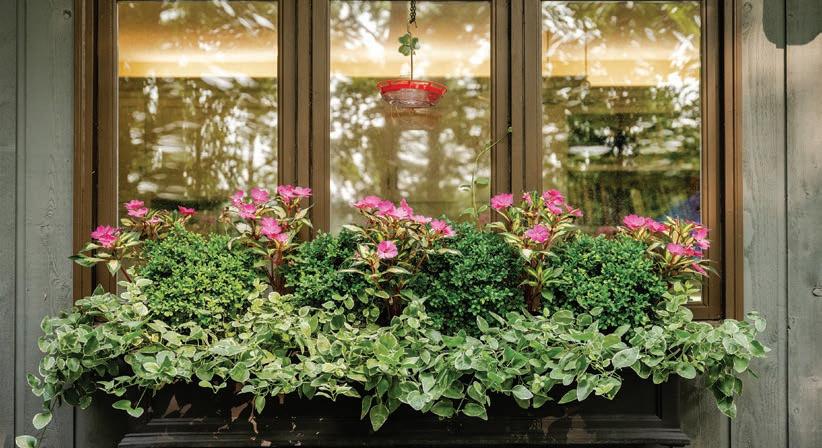


Wednesday, April 3, 2024 at 4 — 6 p.m.
Grandover Resort & Spa: 1000 Club Road, Greensboro, NC 27407
Patti Callahan Henry is a New York Times-bestselling author of 17 novels, including Becoming Mrs. Lewis, Once Upon a Wardrobe and Surviving Savannah. Join us in a celebration of the paperback release of her latest novel, The Secret Book of Flora Lea. After a cocktail hour featuring an array of heavy hors d’oeuvres and sips, Patti will speak, answer audience questions and sign books, which will be available for purchase on-site through The Country Bookshop.
Book your tickets today at:

Supported by:


March is a giggle of wild violets, a squeal of flowering redbud, a tea party in the making.
The earth is awakening. As purple blossoms spill across the softening landscape, cottontail rabbits follow. Mingling in sunny patches, they graze on heart-shaped leaves and tender grasses, feast on the freshness of this fragrant spring morning.
In the distance, a pregnant doe plucks clusters of crisp buds from magenta-studded branches. Munching to the tune of chattering squirrel, counter-singing wrens and whitethroated sparrow, the deer hears a different kind of music: laughter. One ear back and one ear forward, she pinpoints the source, gently flicks her tail, resumes her browsing.
The children arrive skipping, bare feet in cool grass, eyes bright with life and color. Their pleasure is unmeasured; their vision is clear: wild violet shortbread.
Between cartwheels and somersaults, they gather purple flowers, linger in the sunlight, bask in the welcome, dewy warmth. As they dream up tea and cookies, guests of honor arrive on the wing: bluebird, robin, purple martin, warbler, swallow, towhee, killdeer. The old tabby is near. Early honeybees embrace early dandelions. Her ruby-throated highness takes her throne in a luminous redbud.
Soon, a heap of hand-picked violets becomes a spread fit for a court. Among wild giggles, the children don crowns, wriggle their toes in the soft grass, sink their teeth into the delicate sweetness as the birds sing spring is here.
“The first day of spring is one thing,” wrote the late poet and author Henry van Dyke, “and the first spring day is another.” Such is the day that the earliest eastern tiger swallowtail glides across Carolina blue skies.
The first broods of our official state butterfly are on the move. With a wingspan up to 5 1/2 inches, this eye-catching swallowtail is recognized by its black and yellow tiger stripes and three-lobed hindwings. Most females have a low row of iridescent blue markings on their hindwings. However, they can also occur in a dark color phase, causing humans and male tiger swallowtails alike to mistake them for a different species.
Want to take a closer look? Attract swallowtails to your own garden with native pollinator plants they won’t be able to resist. And if you’re looking for suggestions, check out North Carolina Wildlife Federation’s list of native trees, shrubs and flowers here: ncwf.org/habitat/ native-pollinator-plants.
Spring’s greatest joy beyond a doubt is when it brings the children out.
— Edgar Guest
The days are growing longer still. Daylight saving time begins on Sunday, March 10. All the better for soaking up the soft and radiant magic of spring, which officially begins with the vernal equinox on Tuesday, March 19. According to Scientific American’s “Sky Spectacles to Watch in 2024,” you’ll want to gaze due west at sunset on Sunday, March 24, when Mercury will appear directly above the sun at twilight. Positioned at its “greatest eastern elongation” (greatest distance from our sun), Mercury will be about 19 degrees from the star that gives us life. A little wink from a tiny, not-so-faraway planet that isn’t always easy to spot. OH

A special advertising section spotlighting area restaurants, caterers, bakeries, markets and specialty stores
 The Sage Mule | Ryan's Restaurant | Pepper Moon Catering
Cugino Forno Pizzeria | Imperial Koi Asian Bistro & Sushi Bar
Liberty Oak Restaurant & Bar | Blue Agave Mexican Bar & Grill
The Sage Mule | Ryan's Restaurant | Pepper Moon Catering
Cugino Forno Pizzeria | Imperial Koi Asian Bistro & Sushi Bar
Liberty Oak Restaurant & Bar | Blue Agave Mexican Bar & Grill





As one of Greensboro’s most popular hot spots for all-day breakfast and lunch, The Sage Mule also serves up a delicious weekend brunch. With a full bar, an ever-expanding beer and wine list and a diverse menu, The Sage Mule offers something for everyone.





























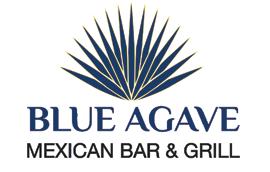

Please verify times, costs, status and location before attending an event. Although conscientious efforts are made to provide accurate and up-to-date information, the world is subject to change and errors can occur!
To submit an event for consideration, email us at ohenrymagcalendar@gmail.com by 5 p.m. the first of the month one month prior to the event.

BARRE CLASS. 10 a.m. Strengthen, tone and stretch your way into the week. Tickets: $10. Grandover Resort & Spa, 1000 Club Road, Greensboro. Info: grandoverresort.com.
FOOD & FLOW. 10–11 a.m. Begin your day with a relaxing yoga practice and a mimosa. BYO mat and needed props. Tickets: $5. Elm & Bain, 620B S Elm St., Greensboro. Info: southendbrewing.com/event-directory.
PELVIC HEALTH YOGA. 8:30–9:30 a.m. This Vinyasa-style flow class works toward lengthening and strengthening the pelvic floor and surrounding muscles. Free, registration required and donations accepted. Triad Pelvic Health, 5574 Garden Village Way, Greensboro. Info: triadpelvichealth.com/classes.
RUN CLUB. 6 p.m. All levels are welcome to join Little Brother Brewing’s run clubs and earn incentives such as beer and swag. Free. Little Brother Brewing, 348 S Elm St, Greensboro. Info: littlebrotherbrew.com/runclub.
LIVE MUSIC. 6–9 p.m. Evan Olson and Jessica Mashburn of AM rOdeO play covers and original music. Free. Print Works Bistro. 702 Green Valley Road, Greensboro. Info: printworksbistro.com/gallery/music.
FAMILY NIGHT. 5–7 p.m. Enjoy an artdriven evening with family and friends in the studios. Free. GreenHill Center for NC Art, 200 N. Davie St., Greensboro. Info: greenhillnc.org/events.
CHECK MATE. 7–9 p.m. The Greensboro Chess Club gathers weekly to play and study “The Royal Game” on both a social and competitive level. Free. Lewis Recreation Center,

Working Women
03.16.2024
3110 Forest Lawn Drive, Greensboro. Info: greensboro-nc.gov/government/city-news/ city-calendar.
JAZZ AT THE O.HENRY. 6–9 p.m. Sip vintage craft cocktails and snack on tapas while the O.Henry Trio performs with a different jazz vocalist each week. Free. O.Henry Hotel Social Lobby, 624 Green Valley Road, Greensboro. Info: ohenryhotel. com/o-henry-jazz.
WALK THIS WAY. 6 p.m. Put on your sneakers for a 2–4 mile social stroll or jog with the
Downtown Greenway Run & Walk Club, which is open to all ages and abilities. Free. LoFi Park, 500 N. Eugene St., Greensboro. Info: downtowngreenway.org/events.
THURSDAYS & SATURDAYS
KARAOKE & COCKTAILS. 8 p.m. until midnight, Thursdays; 9 p.m. until midnight, Saturdays. Courtney Chandler hosts a night of sipping and singing. Free. 19 & Timber Bar at Grandover Resort & Spa, 1000 Club Road, Greensboro. Info: grandoverresort.com.
LIVE MUSIC. 7–10 p.m. Enjoy drinks in the 1808 Lobby Bar while soaking up live music provided by local artists. Free. Grandover Resort & Spa, 1000 Club Road, Greensboro. Info: grandoverresort.com.
YOGA. 9:30 a.m. Don’t stay in bed when you could namaste in the spa studio. Tickets: $10. Grandover Resort & Spa, 1000 Club Road, Greensboro. Info: grandoverresort.com.
WATER AEROBICS. 10:30 a.m. Make a splash while getting a heart-pumping workout at an indoor pool. Tickets: $10. Grandover Resort & Spa, 1000 Club Road, Greensboro. Info: grandoverresort.com.
March 01–27
HIGH ART. This is the last month to catch the 2-D and 3-D work of students from 17 area high schools, ranging from Grimsley to Tri-City Christian Academy. The Art Gallery at Congdon Yards, 400 W. English Dr., Suite 151, High Point. Info: tagart.org/exhibits.
March 01–03
AND THEN THERE WERE NONE. Times vary. In this stage adaptation of the Agatha Christie thriller, 10 strangers, each with a wicked past, are summoned to a remote island, where one by one they are murdered. Tickets: $22+. Centennial Station Arts Center, 121 S. Centennial St., High Point. Info: highpointtheatre.com/events.
March 01–02
THE BUSTERCUPS. 8 p.m. Enjoy an evening of witty wordplay, lyricism and flow when the comedic hip-hop duo takes the stage. Tickets: $15. The Idiot Box, 503 N. Greene St., Greensboro. Info: idiotboxers.com.
March 01
KATT WILLIAMS. 8 p.m. The actor and comedian whose career spans over 20 years delivers a night of entertainment with his Dark Matter tour. Tickets: $59+. Greensboro Coliseum, 1921 W. Gate City Blvd., Greensboro. Info: greensborocoliseum.com/events.
FIRST FRIDAY. 6–9 p.m. Enjoy live entertainment by Central Library’s children’s librarian Pete Turner, a cash bar and open studios in ArtQuest. Free. GreenHill Center
for NC Art, 200 N. Davie St., Greensboro. Info: greenhillnc.org/events.
March 02, 09, 16, 23
BLACKSMITH DEMONSTRATION. 10 a.m.–4:30 p.m. Watch a costumed blacksmith in action as he crafts various iron pieces. Free. Historical Park at High Point Museum, 1859 E. Lexington Ave., High Point. Info: highpointmuseum.org.
March 02
DAN + SHAY. 7 p.m. The chart-topping country-pop duo takes the stage with special guests Ben Rector and Hailey Whitters. Tickets: $37.50+. Greensboro Coliseum, 1921 W. Gate City Blvd., Greensboro. Info: greensborocoliseum.com/events.
R&B KICKBACK. 8 p.m. Next, Ginuwine, Bobby V, H-Town and many more R&B artists perform during the Ladies R & B Kickback Tour. Tickets: $65+. Steven Tanger Center, 300 N. Elm St., Greensboro. Info: tangercenter.com/events.
GUIDED GREENWAY TOUR. 9 a.m.–noon. Step into Greensboro’s history, take in public art installations, plus learn about environmental stewardship and economic impact during a walking tour of the 4-mile Downtown Greenway. Free; registration required. LoFi Park, 500 N. Eugene St., Greensboro. Info: downtowngreenway.org/events.
March 03, 10, 17, 24
STAND-UP 101. 3–5 p.m. See if you have what it takes to be a stand-up comedian in this five-part workshop series. Tickets: $200. The
Idiot Box, 503 N. Greene St., Greensboro. Info: idiotboxers.com/classes.
March 03
AEW REVOLUTION 2024. 7 p.m. Bear witness as Sting hits the mat in the last wrestling match of his professional career. Tickets: $25+. Greensboro Coliseum, 1921 W. Gate City Blvd., Greensboro. Info: greensborocoliseum.com/events.
PETER FRAMPTON. 8 p.m. The Grammywinning guitarist who has performed with some of the music industry’s biggest acts takes the stage solo. Tickets: $55.50+. Steven Tanger Center, 300 N. Elm St., Greensboro. Info: tangercenter.com/events.
March 05–10
SIX. Times vary. This smash hit Broadway show tells the tale of the six wives of Henry VIII — “divorced, beheaded, died; divorced, beheaded, survived” — in musical competition show format. Tickets: $76+. Steven Tanger Center, 300 N. Elm St., Greensboro. Info: tangercenter.com/events.
March 06–10
WOMEN’S ACC TOURNAMENT. Times vary. Experience the Ally Women’s ACC Basketball Tournament in person right here in the Gate City. Greensboro Coliseum, 1921 W. Gate City Blvd., Greensboro. Info: greensborocoliseum.com/events.
March 06
READING THE WORLD. 7–8 p.m. Discover contemporary authors’ works in


03.09.2024
translation, such as this month’s selection, The Book of Eve by Carmen Boullosa. Free. Online. Info: scuppernongbooks.com/event.
MEET AND GREET. 6–8 p.m. The public is welcome to attend the Greensboro Human Rights Commission’s first quarterly meeting of the year to meet representatives. Free. Barber Park Event Center, 1502 Barber Park Drive, Greensboro. Info: greensboro-nc.gov/ government/city-news/city-calendar.
WILL HOGE. 8 p.m. The Nashville-based singer-songwriter known for hits such as “Even If It Breaks Your Heart” takes the stage with special guest Meaghan Farrell. Tickets: $25. Flat Iron, 221 Summit Ave., Greensboro. Info: flatirongso.com/events.
March 07–10
MACBETH. Times vary. Shared Radiance Performing Arts Company and Creative Greensboro invite you to step into early medieval Scotland and join the three witchy sisters and all the edgy characters of the Shakespaere classic. Tickets: $10. Stephen D. Hyers Theatre, 200 N. Davie St., Greensboro. Info: greensboro-nc.gov/departments/creative-greensboro.
March 07
TARTAN TERRORS. 7:30 p.m. This popular Celtic festival band pairs the energy of a rock show with humor and stepdance, making you rethink how you hear bagpipes and fiddles. Tickets: $20+. High Point Theatre, 220 E. Commerce Ave., High Point. Info: highpointtheatre.com/events.
STEVEN CURTIS CHAPMAN. 7 p.m. The contemporary Christian music singer-songwriter brings new music and old favorites to the stage. Tickets: $25+. Carolina Theatre,
310 S. Greene St., Greensboro. Info: carolinatheatre.com/events.
DR. JESSICA B. HARRIS. 6:30–8 p.m. Come hear this James Beard Cookbook Hall of Fame inductee, James Beard Lifetime Achievement Award winner and author of 12 critically acclaimed books that document the foods and foodways of the African Diaspora. Free. Greensboro History Museum, 130 Summit Ave., Greensboro. Info: greensboro-nc.gov/ government/city-news/city-calendar.
March 08–10
BELLEVILLE. Times vary. In this stage play by Amy Herzog, young Americans Zack and Abby move to Paris to start a new, perfect life, but soon the foundation of their marriage begins to crack. Tickets: $16+. Little Theatre of Winston-Salem, 419 N. Spruce St., WinstonSalem. Info: ltofws.org.
March 08–09
PETE JR. 8:30 p.m. The comedian who just made his TV debut with the release of his DryBar Comedy special, Happily Frustrated, will leave you sore from laughing. Tickets: $15+. The Idiot Box, 503 N. Greene St., Greensboro. Info: idiotboxers.com/classes.
March 08
CAITLIN KRISKO & THE BROADCAST. 8 p.m. The powerhouse soul-rock band hailing from Asheville captivates audiences with arrangements and vocals — both vulnerable and artful. Tickets: $15+. Flat Iron, 221 Summit Ave., Greensboro. Info: flatirongso.com/events.
POETRY PARTY. 7–10 p.m. Honor the birthday of the city’s first poet laureate, Josephus III, amongst his friends, family and community, while enjoying great eats and great vibes. Tickets: $40. The Historic Magnolia House, 442 Gorrell St., Greensboro. Info: thepoetrycafe.org.
INTERNATIONAL WOMEN’S DAY WORKSHOP. 5:30–7 p.m. Writers Melissa Hassard and Debra Kaufman are featured in a writing workshop entitled “Inspiring Inclusion,” followed by an open mic, which will begin at 7 p.m. Free, registration required. Bull City Ciderworks, 504 State St., Greensboro. greensboro-nc.gov/government/ city-news/city-calendar.
WOMEN IN SCIENCE. Noon. Celebrate International Women’s Day during your lunch break as friends from the Greensboro Science Center visit the museum to take a look at changing roles for women of STEAM (science, technology, engineering, arts, mathematics). Free. Greensboro History Museum, 130 Summit Ave., Greensboro. Info: greensborohistory.org/events.
March 09
SUBTRONICS. 7 p.m. Feel the beat with a night of live EDM as Subtronics, aka Jesse Kardon, blends subwoofers and electronics. Tickets: $45+. Greensboro Coliseum, 1921 W. Gate City Blvd., Greensboro. Info: greensborocoliseum.com/events.
RETHINK PINK. 7 p.m. iAlign Dance Company sashays across the stage to raise breast cancer awareness. Tickets: $24+. UNCG Auditorium, 408 Tate St., Greensboro. Info: ialigndance.com/events.
NATURAL EGG DYEING. 10 a.m.–4 p.m. Get ready for the Easter Bunny by dying provided eggs with common foods from nature. Free. Historical Park at High Point Museum, 1859 E. Lexington Ave., High Point. Info: highpointmuseum.org.
TEA & POTTERY. 10 a.m.–5 p.m. Celebrate the 10th anniversary of Tea with Seagrove Potters by dropping by venues to sample Carriage House Tea, Table Farmhouse Bakery and Seagrove Cafe pastries, plus homemade treats from Blue Hen, Dean & Martin, Eck McCanless, From the Ground Up, Red Hare and Thomas potteries. Plus, enjoy door prizes and gifts with any purchase for early shoppers. Free. Seagrove. Info: teawithseagrovepotters.com.
POETRY CAFE. 8–10 p.m. Celebrate the birthday of Greensboro’s poet laureate Josephus III with a community of artists for a night of open mic poetry, live music and vendors. Tickets: $15+. Van Dyke Performance Space, 200 N. Davie St. Greensboro. Info: thepoetrycafe.org.
March 11
NATURE PHOTOGRAPHY. 6:30–8:30. Hone your skills with the Carolina Nature Photography Association on the second Monday of every month. Free, no registration required. Griffin Recreation Center, 5301 Hilltop Road, Greensboro. Info: greensboronc.gov/government/city-news/city-calendar.
March 12
DRAG CIRCUS. 8 p.m. Jimbo’s Drag Circu s, aka “The Weirdest Show on Earth,” delivers a spectacle featuring show-stopping looks like nothing you’ve ever seen. Tickets: $35+. Greensboro Coliseum, 1921 W. Gate City Blvd., Greensboro. Info: greensborocoliseum.com/events.
LOVE THOSE LEVIS. 5–7:30 p.m. White Oak Legacy Foundation presents a denim history conversation with Tracey Panek of the Levi Strauss & Co. Archive followed by a reception. Free. Greensboro History










march calendar
Museum, 130 Summit Ave., Greensboro. Info: greensborohistory.org/events.
FRIDAY. 7 p.m. Enjoy the iconic comedic hit featuring Ice Cube on the big screen. Tickets: $8+. Carolina Theatre, 310 S. Greene St., Greensboro. Info: carolinatheatre.com/events.
CELTIC WOMAN. 7 p.m. The Celtic Woman 20th Anniversary Tour features a fresh blend of traditional and contemporary Irish music. Tickets: $39+. Steven Tanger Center, 300 N. Elm St., Greensboro. Info: tangercenter.com/events.
BLIPPI. 6 p.m. There’s so much to learn about that will make you want to shout during Blippi: The Wonderful World Tour. Tickets: $20.63+. Steven Tanger Center, 300 N. Elm St., Greensboro. Info: tangercenter.com/events.
BRENDAN SLOCUMB. 11:30 a.m. The North Carolina-born author of Symphony of Secrets and The Violin Conspiracy (a Good Morning America Book Club selection) will read at the High Point Literary League meeting. Members only, but membership enrollment is open. High Point Country Club, 800 Country Club Drive, High Point. Info: hpliteraryleague.org.

RALEIGH OR BUST. The High Point Historical Society hosts a bus trip to Raleigh for visiting the Furniture: Crafting a North Carolina Legacy exhibition at the North Carolina Museum of History, touring the State Archives and enjoying lunch at a downtown restaurant. Tickets: $60, lunch not included. Reservations: (336) 883-3021 or crystal.williams@highpointnc.gov.
March 14–17
CIRQUE DU SOLEIL. Times vary. The world-famous circus presents Corteo, a joyous procession, a festive parade as imagined by a clown. Tickets: $55+. Greensboro Coliseum, 1921 W. Gate City Blvd., Greensboro. Info: greensborocoliseum.com/events.
March 14
CATHY LADMAN. 7:30 p.m. One of America’s top comedians delivers a show that draws laughter from exposing personal neuroses. Tickets: $25+. High Point Theatre, 220 E. Commerce Ave., High Point. Info: highpointtheatre.com/events.
BOARDINGHOUSE WOMEN. 6 p.m. As part of One City, One Book, historian Elizabeth S.D. Engelhardt discusses her new book,
Boardinghouse Women: How Southern Keepers, Cooks, Nurses, Widows and Runaways Shaped Modern America. Free. Greensboro History Museum, 130 Summit Ave., Greensboro. Info: greensborohistory.org/events.
OPEN MIC. 6–7:30 p.m. Writers of all genres are invited to read from their original works for five minutes at “a very cool monthly open mic” held on the third Thursday of each month. Free. Scuppernong Books, 304 S. Elm St., Greensboro. Info: scuppernongbooks.com/event.
March 15–17
GIFT & JEWELRY SHOW. 10 a.m. Browse the latest in accessories, jewelry and fashion from national exhibitors. Tickets: $25+. Greensboro Coliseum, 1921 W. Gate City Blvd., Greensboro. Info: greensborocoliseum.com/events.
ESCAPING DREAMLAND. Times vary. In this stage adaptation of local bestselling author Charlie Lovett’s novel, three aspiring writers confront the secrets they kept from each other while exploring the vibrance of summer in New York City. Tickets: $14+. Little Theatre of Winston-Salem, 419 N. Spruce St., Winston-Salem. Info: ltofws.org.



March 15–18
BARRE-THDAY PARTY. Celebrate Neighborhood Barre Greensboro’s anniversary with free barre classes, sip-and-shops of retail merch and membership specials. Free with pass from website. Pure Barre Greensboro, 3712 E. Lawndale Drive, Greensboro. Info: neighborhoodbarre.com/ location/nb-greensboro.
March 15
TAMIA & JOE. 8 p.m. Two soulful R&B voices come together for one smooth show. Tickets: $69+. Steven Tanger Center, 300 N. Elm St., Greensboro. Info: tangercenter.com/events.
DEWAYNE WHITE. 8 p.m. This DC-based comedian is a combat-wounded Army vet who draws humor from his unique take on his military experience and everyday life as a husband and father. Tickets: $15+. The Idiot Box, 503 N. Greene St., Greensboro. Info: idiotboxers.com/classes.


March 16–31
SPACE ART. GreenHill Center for NC. Art’s latest exhibit, LEAP: Artists Imagine Outer Space, opens to the public on March 16 from 2–4 p.m. and will be visible in the gallery through June 29. Free. GreenHill Center for NC Art, 200 N. Davie St., Greensboro. Info: greenhillnc.org/events.
March 16
SYMPHONY DIRECTOR CANDIDATE. 8 p.m. Accompanied by Collin Currie on percussion, Christopher Dragon throws down his baton as contender for Greensboro Symphony director. Tickets: $35+. Steven Tanger Center, 300 N. Elm St., Greensboro. Info: greensborosymphony.org/events/list.
WORKING WOMEN. 10 a.m.–4 p.m. Meet the Working Women of Early High Point. Costumed interpreters demonstrate some of the activities that Quaker, enslaved and free early High Point women would have done. Free. Historical Park at High Point Museum, 1859 E. Lexington Ave., High Point. Info: highpointmuseum.org.





march calendar
March 17
GLORIA TREVI. 7:30 p.m. The singer-songwriter and dancer known as “The Supreme Diva of Mexican Pop” takes the stage with an energetic and entertaining performance. Tickets: $35.50+. Steven Tanger Center, 300 N. Elm St., Greensboro. Info: tangercenter.com/events.
March 19
WINE ED. 6–7 p.m. Taste and learn about various wines during “Wine to Not Whine About.” Free, registration required and must be 21+. Deep Roots Market, 600 N. Eugene St., Greensboro. Info: tinyurl.com/DGwine24.
WRITING INTO GRIEF. 6:30 p.m. Bushra Rehman leads A Furious Blooming: Writing into Grief, an online workshop for BIPOC and/or queer writers that will delve into the depths of writing about grief. Registration: $40+. Online. Info: ticketmetriad.com/ events/a-furious-blooming-writing-into-grief-3-19-2024.
March 21
GREENWAY PARTY. 6–7 p.m. Celebrate the third anniversary of the Downtown Greenway with a group walk or run followed by fun festivities and prizes. Free. LoFi Park, 500 N. Eugene St., Greensboro. Info: downtowngreenway.org/ event/3rd-anniversary-party-downtown-greenway-run-walk-club.
March 22 & 24
THE MARRIAGE OF FIGARO. 8 p.m. & 2 p.m. The Piedmont Opera invites you to the wedding of the year, featuring lust, revenge and deception. Tickets: $20+. High Point Theatre, 220 E. Commerce Ave., High Point. Info: piedmontopera.org/ marriage-of-figaro
March 22
DRIFTWOOD. 8:30 p.m. The American folk-rock band from Binghamton, N.Y., takes the stage for a night of soulful and gritty tunes. Tickets: $18+. Flat Iron,
221 Summit Ave., Greensboro. Info: flatirongso.com/events.
March 23–31
FURNITURE HISTORY. Experience mid-19th century Piedmont’s small-shop furniture making as it scaled from custom to factory furniture in a new exhibit, Makers to Manufacturers: Furniture-Making in the Piedmont, 1830-1890. Open through 2024. Free. High Point Museum, 1859 E. Lexington Ave., High Point. Info: highpointmuseum.org.
March 23
VIDEO GAMES LIVE. 8 p.m. This award-winning show provides an immersive experience through some of the most popular video games of all time. Tickets: $35+. Steven Tanger Center, 300 N. Elm St., Greensboro. Info: greensborosymphony.org/ events/list.
WOMEN’S HISTORY. Noon–3 p.m. Women’s history comes to life through costumed interpreters. Free. Greensboro History Museum, 130 Summit Ave., Greensboro. Info: greensborohistory.org/events.
TEA WITH FANCY NANCY. 12:45 p.m. Sip tea or punch, pinkies out, while noshing on treats and mingling with Fancy Nancy and other characters from the Greensboro Ballet’s production of this storybook. Tickets: $30. Carolina Theatre, 310 S. Greene St., Greensboro. Info: carolinatheatre.com/events.
STORYBOOK BALLET. 2 & 7 p.m. The Greensboro Ballet presents a dazzling and whimsical display of talent in Storybook Tales. Tickets: $40. Carolina Theatre, 310 S. Greene St., Greensboro. Info: carolinatheatre.com/events.
DRAG QUEEN STORYTIME. 11 a.m.–noon. Enjoy an hour of “fun for everyone,” filled with stories, queens and crafts. Free. Scuppernong Books, 304 S. Elm St., Greensboro. Info: scuppernongbooks.com/event.
PHILHARMONIA. 7:30–9:30. As part of the City Ensemble
Concerts, Philharmonia performs its first spring concert of 2024. Free, donations accepted. Gail Brower Huggins Performance Center, 815 W. Market St., Greensboro. Info: greensboro-nc.gov/government/city-news/ city-calendar.
March 24
INTERGALACTIC SOUL. 5–7 p.m. GreenHill welcomes artists Marcus Kiser, Jason Woodberry, Quentin Talley and Alexander Newman Hall, who will perform a hip-hop and spoken-word performance inspired by cosmic science fiction and AfroFuturism. Free. Van Dyke Performance Space, 200 N. Davie St., Greensboro. Info: greenhillnc.org/events.
COMMUNITY SINGALONG. 3 p.m. Gather at This CommUnity Sings to share in heartfelt renditions of beloved showtunes. Free. Carolina Theatre, 310 S. Greene St., Greensboro. Info: carolinatheatre.com/events.
March 25
FILM FEST. 7 p.m. Stand on the highest peaks, ski the steepest slopes and be part of





gripping adventures, all from your theater seat, during the Banff Centre Mountain Film Festival World Tour. Tickets: $11.24+. High Point Theatre, 220 E. Commerce Ave., High Point. Info: highpointtheatre.com/events.
March 26–31
TINA. Times vary. Take a journey back in time to witness Tina Turner make the ultimate comeback to become the” Queen of Rock ‘n’ Roll” in this Broadway adaptation of her life story. Tickets: $44+. Steven Tanger Center, 300 N. Elm St., Greensboro. Info: tangercenter.com/events.
March 28
BLUE OCTOBER. 8 p.m. Rock out to the angst-drenched music of the band whose career spans close to three decades and seven studio albums. Tickets: $37+. Greensboro Coliseum, 1921 W. Gate City Blvd., Greensboro. Info: greensborocoliseum.com/events.
GARRISON KEILLOR. 8 p.m. Enjoy a night that’s part stand-up, part poetry, part music, part storytelling as the man from “Lake Wobegon” takes the stage. Tickets:





$20+. Carolina Theatre, 310 S. Greene St., Greensboro. Info: carolinatheatre.com/events.
March 29
ZZ TOP & LYNYRD SKYNYRD. 7 p.m. Two iconic American rock bands founded over 50 years ago headline The Sharp Dressed Simple Man Tour. Tickets: $40.50+. Greensboro Coliseum, 1921 W. Gate City Blvd., Greensboro. Info: greensborocoliseum.com/events.
March 30
WE THEM ONE’S. 8 p.m. Deray Davis, DC Young Fly, Karlous Miller, Lil Duval, Mojo Brookzz, Money Bag Mafi, and Tip Harris come together for a night of pure comic gold. Tickets: $59.50+. Greensboro Coliseum, 1921 W. Gate City Blvd., Greensboro. Info: greensborocoliseum.com/events.
KIERAN KANE & RAYNA GELLERT.
7:30 p.m. Fiddle & Bow present a night of toe-tapping bluegrass music in the Crown. Tickets: $25+. Carolina Theatre, 310 S. Greene St., Greensboro. Info: carolinatheatre.com/events. OH



























SATURDAY, MARCH 16, 2024, 8PM
Christopher Dragon conductor
Colin Currie percussion
KORNGOLD Theme and Variations
ELFMAN Percussion Concerto STRAVINSKY Suite (1945) from The Firebird
AMILY

SATURDAY, MARCH 23, 2024, 8PM
The award-winning Video Games Live brings the energy and excitement of a rock concert mixed with the interactivity and stunning visuals that only the most iconic video games can provide!


SATURDAY, APRIL 13, 2024, 8PM
Evan Feldman conductor
The GSO explores the iconic musical galaxy of Star Wars with some of the most thrilling music ever written for the movies.

121-A WEST MCGEE ST. GREENSBORO, NC 27401
WWW.JACOBRAYMONDJEWELRY.COM 336.763.9569



Come see why everyone


Currently




















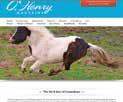


















Take your home or garden up a notch with inspiration from these local businesses.
Reynolda House | Convention & Visitors Bureau - Pinehurst, Southern Pines, Aberdeen Area | North Carolina Zoo
Twin Deer Antiques | Wilmington Convention and Visitors Bureau | Blowing Rock Art & History Museum





















Here in Moore County, our golf courses aren’t the only place you’ll find unforgettable water features. We’re home to incredible outdoor adventures, unique dining, amazing shopping—everything you want in a getaway.
So plan your visit today. We guarantee: It’s Moore than you’re expecting!







Make the most of every wave. At Wilmington and Island Beaches our stays have plenty of ways to help your family kick back and cool down after a long beach day. Enjoy historic riverfront or oceanfront accommodations with views that will surely take your breath away.
Discover the best of the Carolina coast all in one place.



















High Point Country Club
Friday, February 2, 2024
Photographs courtesy of Yasmin Leonard Photography

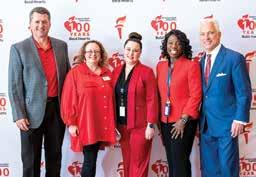









 By Tim Swink
By Tim Swink
It was on the front steps of the YMCA in a steel mill town, where I’d rented a room, that I first met him. I had followed a pretty girl who’d come south for a two-week stay at the coast back to Northeast Ohio. I was smitten. I ended up staying until the end of August, when I returned home to begin my fall semester at Guilford College.
Picking up work on a construction site as a carpenter’s helper or a laborer, the summer job for many college guys down South? No problem. But the problem here was being able to walk through the barbed-wire fences that surrounded worksites without a union membership card. After being unceremoniously asked to leave, I realized that this was a steel town where the world was hard, as were its men. Manpower Temporary Services became my employer, assigning me jobs nobody wanted to do.
After a day’s work for Manpower, I’d sit on the front steps of the YMCA, waiting for my girlfriend to pick me up so we could spend the evening together. It was on those granite steps that I first saw him. Back then, he was labeled “gimp-legged” since he walked with a very bad limp. I later learned that his leg had been crushed in an incident while working in one of those steel mills, leaving him disabled, with a meager monthly check and a room at the Y. Later on those evenings, when my girlfriend would drop me back off, a dread would fill me. As I entered the lobby and could hear shouting and curses echoing up and down the halls, I’d run up the stairs, two at a time, to my third floor room and immediately lock the door. When the noise would die down late
in the night, making way for me to tiptoe down the hall to the communal bathroom, where I’d finally wash up.
The Y was a daunting place, where rough men with rough lives resided. But there was one exception: “the man on the steps.” He had a kind, gentle nature. A contradiction in the given environment. A wounded man, physically, against a backdrop of hard men and their hard living. Through evening conversations at the Y, I came to know him. I don’t recall what we talked about. And I don’t recall his name. I wish I did. He deserved that. But I felt a connection with him and I can still see him to this day, just as he looked when he’d gaze up into the soft twilight glow. He’d fixate on jets that periodically streamed across the sky. One day I heard him say to himself, “Man, I’d give anything to be on that jet, going wherever it’s going. It wouldn’t matter. Just outta here.”
During one of our evening talks, I rubbed my hand across my stubbled face and mentioned that I’d either lost or forgotten my razor. The next evening, there on the steps, he reached into his pocket and extracted a worn razor and held it out to me saying, “Here. Take this.” I resisted, but he insisted. “You need it more than I do, to stay handsome for that pretty lady.” Looking down at the razor, I noticed he’d colored the base of the handle red — to identify it, I assumed. You had to protect what was yours in the YMCA.
As I type this piece, a used razor with a red handle sits on my writing desk. A simple gesture that said so much. A remembrance of a kind, gentle man from so long ago, who wanted me to stay handsome for the pretty lady who later became my wife. The kind, gentle man who just wanted to fly away. To anywhere. I hope he did. OH
Tim Swink resides in Greensboro and is the author of three novels: Curing Time, Madd Inlet and a sequel to Curing Time, Where the Flowers Bloomed, released in February 2024.
HARRY BLAIR
